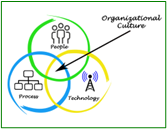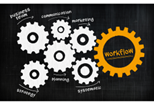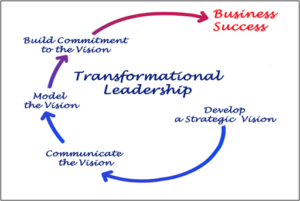Organizational Transformation

The Appleton Greene Corporate Training Program (CTP) for Organizational Transformation is provided by Mr. Brinkman MBA LSSBB Certified Learning Provider (CLP). Program Specifications: Monthly cost USD$2,500.00; Monthly Workshops 6 hours; Monthly Support 4 hours; Program Duration 24 months; Program orders subject to ongoing availability. 
Personal Profile
With over two decades of unparalleled expertise in health, safety, security, environment, and quality (QHSE) management, Mr. Brinkman MBA LSSBB stands at the pinnacle of the management consulting industry. His extensive knowledge spans quality management, operations, environmental management, and occupational health and safety. As a Certified Learning Provider (CLP) at Appleton Greene, Mr. Brinkman brings experience and a proven track record of delivering transformative results.
His credentials are impeccable: a Certified Lean Six Sigma Black Belt, an EHS Senior Technician, a Master’s degree in International Business Administration, a specialized certification in Environmental Health and Safety, and an extensive post-master course as an Organization and Labor Expert. His broad and deep industry expertise covers several industries, including the energy, manufacturing, logistics, quality, and consulting sectors. Mr. Brinkman’s international experience, particularly in the Netherlands, Belgium, Turkey, and the Arabian Gulf Region, has honed his skills in navigating complex commercial landscapes.
Mr. Brinkman is not just an experienced consultant but a strategist and visionary. His remarkable ability to lead large-scale projects, particularly in the quality, health, safety, and environmental domains, has earned him widespread acclaim. He is adept at constructing robust QHSE systems in partnership with leading certifying organizations and is a master at integrating ISO standards.
Throughout his illustrious career, Mr. Brinkman has held senior roles in multinational corporations, working with industry giants such as Sabic, Saudi Aramco, Dow Chemicals, DSS+, Unilever, Proctor & Gamble, GXO Logistics, DNP Global, and others. His accomplishments include optimizing processes and fostering successful collaborations with QHSE professionals across various heavy industrial sectors globally. Mr. Brinkman’s commitment to excellence has garnered national and international recognition, making him a pivotal figure in bespoke QHSE projects.
Mr. Brinkman’s profound understanding of complex regulatory environments and demonstrated ability to enhance organizational performance through efficient QHSE procedures are unparalleled. He has successfully developed essential safety and quality frameworks for top organizations while leading a vast network of QHSE specialists. His strategic contributions to significant projects and unwavering focus on environmental, health, and quality standards have positioned him as an exemplary leader and a globally recognized expert in safety and quality.
In summary, Mr. Brinkman is not just a consultant; he is a thought leader and an innovator whose extensive experience and dedication have significantly influenced the fields of safety, quality, and environmental management. His expertise is not just a service; it’s a valuable asset for any organization aspiring to excel in today’s competitive and regulatory complex global marketplace.
To request further information about Mr. Brinkman through Appleton Greene, please Click Here.
(CLP) Programs
Appleton Greene corporate training programs are all process-driven. They are used as vehicles to implement tangible business processes within clients’ organizations, together with training, support and facilitation during the use of these processes. Corporate training programs are therefore implemented over a sustainable period of time, that is to say, between 1 year (incorporating 12 monthly workshops), and 4 years (incorporating 48 monthly workshops). Your program information guide will specify how long each program takes to complete. Each monthly workshop takes 6 hours to implement and can be undertaken either on the client’s premises, an Appleton Greene serviced office, or online via the internet. This enables clients to implement each part of their business process, before moving onto the next stage of the program and enables employees to plan their study time around their current work commitments. The result is far greater program benefit, over a more sustainable period of time and a significantly improved return on investment.
Appleton Greene uses standard and bespoke corporate training programs as vessels to transfer business process improvement knowledge into the heart of our clients’ organizations. Each individual program focuses upon the implementation of a specific business process, which enables clients to easily quantify their return on investment. There are hundreds of established Appleton Greene corporate training products now available to clients within customer services, e-business, finance, globalization, human resources, information technology, legal, management, marketing and production. It does not matter whether a client’s employees are located within one office, or an unlimited number of international offices, we can still bring them together to learn and implement specific business processes collectively. Our approach to global localization enables us to provide clients with a truly international service with that all important personal touch. Appleton Greene corporate training programs can be provided virtually or locally and they are all unique in that they individually focus upon a specific business function. All (CLP) programs are implemented over a sustainable period of time, usually between 1-4 years, incorporating 12-48 monthly workshops and professional support is consistently provided during this time by qualified learning providers and where appropriate, by Accredited Consultants.
Executive summary
Organizational Transformation
Keeping oneself at the forefront of change is not merely a desirable option in the fast-paced and high-pressure environment of global business but an absolute necessity. The organizational transformation program is not only a technique for achieving progress; it is an urgent cry to alter the fundamental aspects of your business. This transformative journey is not a choice that organizational leadership can make at will; it is an essential requirement for any firm determined to survive and prosper in the global economy.
Imagine a world in which your organization is not just participating in the process of establishing global standards but also taking the initiative to do so. The organizational transformation program promises that it will accomplish this. The distance between the procedures currently in place and the highest possible level of operational excellence continues to increase with each passing instant. Delaying this journey not only puts you at risk of falling behind, but it also puts you at risk of being irrelevant in a highly competitive world. Inaction comes at a cost significantly higher than the investment made in this program.
This program addresses crucial issues that are frequently unseen but can have catastrophic consequences. The fact that your organization does not have a well-defined strategy or transformation plan is not merely a trivial oversight; instead, it poses a significant risk to your organization’s future. To serve as a guiding light for firms that aim to meet and exceed global standards. It is an investment in becoming a pioneer so others can follow your lead and set new standards.
The organizational transformation program is the key to unlocking the dormant opportunities within your firm. Applying the objectives of this program is an immediate and non-negotiable action that participants must take to guarantee that their business does not merely adjust to change but actively defines it. The Organizational Transformation Program is a model of strategic renewal that organizational change experts meticulously designed to catalyze profound and long-term evolution within the corporate realm.
In our Organizational Transformation Program, we spotlight case studies like the remarkable journey of Amazon under the visionary leadership of Jeff Bezos. Launched on July 5, 1994, in Bellevue, Amazon initially set its sights on revolutionizing the bookselling landscape. However, under Bezos’s astute guidance, it rapidly transcended its original mission, evolving into a colossal marketplace that now encompasses virtually every product category imaginable. This transformation has not only solidified Amazon’s status as the quintessential “Everything Store” but also positioned it at the forefront of global commerce, with its headquarters in Seattle and a presence in more than 14 countries worldwide.
Amazon’s narrative is a textbook example of industry disruption, particularly in technology and retail. As the second-largest private employer in the United States, its journey from a modest revenue of $34.20 billion in 2010 to an astounding $469.82 billion in 2021 exemplifies unprecedented growth and strategic agility. This meteoric rise is partly attributed to Amazon’s bold foray into web services, which, over the last decade, has seen a growth increment of 11%.
What sets Amazon apart, and what we meticulously dissect in our program, is its unwavering commitment to innovation and customer satisfaction. Amazon’s ability to consistently disrupt established markets and set new industry benchmarks is a result of this commitment, which Bezos has championed.
Our program delves into Amazon’s methodologies and strategies to achieve such remarkable growth and transformation. Participants will gain insights into the principles of visionary leadership, strategic planning, and innovation that powered Amazon’s journey. Through this case study, we offer profound lessons on how organizations can emulate Amazon’s blueprint to drive their own transformation initiatives, adapt to rapidly changing market dynamics, and position themselves as leaders in their respective industries.
Another example used during our organizational transformation program is Microsoft’s transformative journey. This saga began in 1975, when childhood friends Bill Gates and Paul Allen turned their passion for computer technology into one of the world’s most influential multinational corporations. Initially founded in Albuquerque, Microsoft’s quest for innovation and global dominance soon led it to Redmond, Washington, a move that marked the beginning of its ascension to a global technology powerhouse, now the epicenter of its operations.
This case study spotlights Microsoft’s evolutionary path from a modest software development company to a behemoth in the technology industry, crafting electronics, consoles, and computers and offering many related services. Our program meticulously analyzes how, from generating a revenue of $62.48 billion in 2010, Microsoft skyrocketed to an impressive $168.1 billion by 2021, securing its status as the 21st most prominent company in the Fortune 500 rankings.
A pivotal aspect of Microsoft’s story is its strategic shift towards expanding its intelligent cloud services, which, over the last decade, have grown by a staggering 29%. This strategic transformation is a testament to Microsoft’s innovative capabilities and foresight in capitalizing on the burgeoning demand for cloud computing, securing a vanguard position in the technology industry.
Our program dissects the strategies and leadership decisions that enabled Microsoft to successfully navigate the complexities of organizational transformation. Participants will explore the principles of visionary leadership, strategic foresight, and relentless innovation that propelled Microsoft’s change. Through this comprehensive case study, we impart invaluable lessons on strategic transformation, highlighting how organizations can leverage technology and innovation to drive growth, adapt to market changes, and achieve sustained success.
Joining our Organizational Transformation Program equips you with the knowledge and strategies to navigate the complexities of modern business landscapes. It empowers you to lead your organization through transformative changes, drawing inspiration from companies like Amazon and Microsoft and exemplary paths to global dominance. Professionals determined to guide their organizations toward a future characterized by innovation, growth, and sustained success should not be without this program.
The Organizational Transformational program results from innovative approaches and techniques to carefully analyze and address the core obstacles to organizational advancement. Through its deployment, leaders are not simply instructed but thoroughly equipped to handle and surmount pivotal challenges, propelling their enterprises on a transformative odyssey to unparalleled operational superiority.
Exemplary Techniques Embedded in the Program
1. Strategic Diagnostics and Alignment
With an exhaustive strategic appraisal, this phase discerns the organization’s current strategic posture and delineates discrepancies within its operational fabric.
SWOT analysis, competitive benchmarking, and incisive stakeholder dialogues illuminate the organization’s strengths and vulnerabilities. A series of meticulously curated workshops ensures leadership alignment around a cohesive vision and strategic imperatives, channeling collective efforts toward a harmonized set of objectives.
2. Customized Transformation Roadmaps
This program acknowledges the prevalent void in coherent transformation agendas within the industry and is meticulously designed to introduce the crafting of bespoke transformation roadmaps. It aims to equip participants with the skills and strategic frameworks necessary to develop customized pathways towards organizational transformation effectively. This initiative addresses the critical gap in strategic planning and implementation processes through a rigorous and scholarly approach, fostering a culture of innovation and continuous improvement. Thanks to the curriculum’s foundation in advanced strategic management principles informed by the most recent research and best practices, participants will be well-prepared to navigate the complexities of change management in today’s dynamic business environment. These elaborate, tailored blueprints chart the enterprise’s evolution and delineate milestones, timelines, and resource orchestrations.
3. Change Management and Cultural Reengineering
Incorporating change management tenets to navigate and mitigate resistance accentuates strategic communication, stakeholder engagement, and management. It applies principles of behavioral psychology to cultivate a culture poised for innovation and new operational paradigms. Through targeted developmental sessions and leadership cultivation, it endeavors to eradicate insular cultures, advocating for cross-functional collaboration and the dissolution of organizational silos.
4. Professionalism and Skill Enhancement
This program directly tackles the issue of professionalism deficits by integrating comprehensive skill-enhancement modules, significantly elevating your team’s professional acumen. With a sharp focus on boosting critical thinking, problem-solving, and leadership skills, it prepares your workforce to master the complexities of today’s business challenges. This program is an essential investment for professionals committed to excelling in the modern corporate arena.
5. Benchmarking and Continuous Improvement Mechanisms
Our program introduces organizations to the pinnacle of industry practices and global benchmarks, empowering them to compare their processes with those of sector leaders. It embeds a culture of continuous refinement, leveraging Lean Six Sigma and Kaizen methodologies to boost operational effectiveness significantly. This makes our program an essential tool for professionals committed to excellence and eager to lead their sectors.
Transformational Outcomes and Advantages
1. Elevated Strategic Insight
Our program equips participants with unmatched strategic understanding, providing a comprehensive framework to guide their organizational endeavors seamlessly into alignment with their strategic vision. It’s an indispensable asset for professionals aiming to command their industry with precision and foresight.
2. Operational Excellence and Efficiency
Our program empowers organizations to embrace industry best practices and eliminate process inefficiencies, launching them into superior operational performance. This transformation results in significant cost savings, exceptional service quality, unmatched product excellence, and workplace safety, making it a pivotal investment for professionals seeking to dominate their sector.
3. Adaptive and Collaborative Organizational Culture
We have crafted this premier program to actively revolutionize your organizational culture. It encourages a forward-thinking mindset that anticipates and capitalizes on change, fosters innovation, and enhances cross-functional collaboration. The program empowers individuals to express their creativity freely by ensuring psychological safety and embedding a dynamic culture of continuous improvement and strategic foresight into your organization’s fabric.
This indispensable tool is designed for organizations aiming to lead their industry through proactive adaptation and collaborative innovation.
4. Elevated Professional Standards
Our program strategically accelerates professional development, transforming your workforce into a more skilled, driven, and engaged entity. It boosts productivity and significantly increases retention rates, making it an irresistible investment for any forward-thinking professional.
5. Global Competitiveness
With an intimate understanding of international standards and practices, organizations are poised to compete and dominate globally, setting new benchmarks for industry excellence.
Engagement with the Organizational Transformation Program does not merely prepare firms to meet the exigencies of global commerce; it empowers them to redefine those standards, propelling their domains toward a future characterized by innovation, excellence, and sustained prosperity. This program is an unequivocal investment in the future, a beacon for organizations aspiring to lead, innovate, and thrive in the ever-evolving tapestry of global business.
Take the initiative to go on this trip right now, and your company will not only be at the forefront of the market in the present, but it will also be a pioneer in the future business landscape. It is not tomorrow that the time for transformation is; instead, it is today. Now is the time to seize the chance to call you to take the initiative to achieve a future of unparalleled greatness and widespread appreciation.
Curriculum
Organizational Transformation – Part 1- Year 1 
- Part 1: Month 1: Organizational Evolution
- Part 1: Month 2: Cultivating Improvement
- Part 1: Month 3: Corporate Policy
- Part 1: Month 4: Risks and Opportunities
- Part 1: Month 5: Legal Frameworks
- Part 1: Month 6: Strategic Goals
- Part 1: Month 7: Influencing Change
- Part 1: Month 8: Process Enhancement
- Part 1: Month 9: Optimization Unleashed
- Part 1: Month 10: Organizational Behavior
- Part 1: Month 11: Tailored Training
- Part 1: Month 12: Professional Growth
Organizational Transformation – Part 2- Year 2
- Part 2: Month 1: Process Principles
- Part 2: Month 2: Digital Dynamics
- Part 2: Month 3: Ethical Foundations
- Part 2: Month 4: Streamlining Workflows
- Part 2: Month 5: Auditing Excellence
- Part 2: Month 6: Catalyzing Conformities
- Part 2: Month 7: Power Feedback
- Part 2: Month 8: Global Standards
- Part 2: Month 9: Empowering Teams
- Part 2: Month 10: Communication Mastery
- Part 2: Month 11: Benchmarking Success
- Part 2: Month 12: Industry Accreditation
Program Objectives
The following list represents the Key Program Objectives (KPO) for the Appleton Greene Organizational Transformation corporate training program.
Organizational Transformation – Part 1- Year 1 
Part 1 Month 1: Organizational Evolution
Understanding and mastering organizational evolution has become a strategic imperative in today’s business environment, characterized by rapid market shifts and ground-breaking technological advancements. The “Mastering Organizational Evolution” module, which is the cornerstone of our comprehensive program, is meticulously designed to guide professionals through the ever-changing corporate world. This module is not just an introduction; it is a deep dive into organizational change and transformation dynamics, essential for any professional seeking to maintain and enhance their organization’s competitive edge in sectors experiencing rapid change.
The module begins by exploring the fundamental principles of organizational transition. Understanding these principles is crucial in a world where change is the only constant. Participants will delve into the various factors driving the need for firms to adapt, from significant market changes to groundbreaking technological innovations. In an era where business adaptation has become a necessity rather than a choice, this module provides the insights and tools to navigate this new reality effectively.
One of the key aspects of this module is its focus on the agents of change. These agents—technological advancements, shifts in consumer behavior, or global economic trends—compel firms to reassess and reorganize their cultures, strategies, and operations. This reorganization is not a mere adjustment but a strategic overhaul essential for maintaining a competitive advantage. The module equips participants with the skills to identify these change agents and understand their implications, enabling them to lead their organizations through the transformation process successfully.
A significant component of the module is the evaluation of real-world case studies from various industries. These case studies are carefully selected to demonstrate successful organizational transformations, providing participants with practical, actionable insights. By analyzing these narratives, participants will gain a deeper appreciation of the complexities of effective change management. These case studies serve as a blueprint, illustrating the challenges and triumphs of organizations that have navigated the waters of change successfully.
Moreover, the module emphasizes the importance of developing a comprehensive understanding of the factors that drive transformation. Participants will explore how to harness these factors to their advantage, turning potential challenges into opportunities for growth and innovation. This understanding is critical for professionals leading change initiatives within their organizations.
The ultimate goals of this module are threefold.
Firstly, to establish a solid foundation for participants, ensuring they have a firm grasp of the essentials of organizational transformation. Secondly, to guide them through the complexities of change, equipping them with the tools and strategies needed to navigate this landscape effectively. And finally, to prepare them for the subsequent modules in the program, each building on the knowledge and skills developed in this foundational module.
In conclusion, the “Mastering Organizational Evolution” module is an invaluable resource for professionals looking to excel in today’s dynamic corporate world. By participating in this program, individuals will not only enhance their understanding of organizational transformation but also acquire the skills to lead and implement successful change initiatives. This module is a critical investment for anyone committed to driving their organization forward in an ever-evolving business landscape.
Part 1 Month 2: Cultivating Improvement
In the rapidly evolving landscape of modern life, continuously adapting and improving is not merely an advantage; it is a necessity for survival and success. The “Cultivating a Culture of Continuous Improvement” module is a cornerstone of this philosophy, emphasizing the development of an organizational culture where ongoing enhancement becomes a pervasive norm rather than an occasional initiative. This module is fundamental for organizations aiming to achieve effective and sustainable transformation in a competitive and ever-changing business environment.
This module’s heart is promoting a proactive mindset, where team members are receptive to change and actively seek and initiate improvements. This approach is critical to fostering an environment where progressive change is welcomed and deeply embedded in the organizational fabric. The module introduces participants to techniques and strategies to nurture this continuous improvement mindset at individual and organizational levels. Organizations can unlock a powerful force for innovation and progress by empowering individuals to be agents of change.
One of the core elements of this module is its focus on practical, real-world applications. Participants will learn to identify inefficiencies, develop innovative solutions, and implement these changes effectively within their teams and broader organizational structure. This hands-on approach ensures that the lessons learned are theoretical and immediately applicable, leading to tangible improvements in the workplace.
The long-term benefits of cultivating a culture of continuous improvement are extensive and multifaceted. Firstly, it leads to heightened operational efficiency. When employees continuously look for ways to optimize processes, the organization can operate more smoothly, reduce waste, and increase productivity. Secondly, this culture significantly contributes to cost reduction. Organizations can lower operational costs by streamlining operations and eliminating inefficiencies, leading to improved financial performance.
Another critical benefit of this culture is enhanced employee satisfaction. When team members are engaged in the improvement process, they feel a greater sense of ownership and fulfillment. This increased engagement boosts morale and leads to higher retention rates, as employees are likelier to stay with an organization that values and implements their ideas.

Moreover, a continuous improvement culture contributes to the organization’s resilience and competitiveness. The ability to adapt quickly and effectively is crucial in a business landscape characterized by rapid technological advancements and shifting market dynamics. Organizations that can continuously evolve are better positioned to respond to external changes, seize new opportunities, and maintain a competitive edge.
In conclusion, the “Cultivating a Culture of Continuous Improvement” module is an essential investment for any organization committed to long-term success and sustainability. Participating in this precept to change and equipping their employees with the skills and mindset needed for continuous improvement will also lay the foundation for a more efficient, cost-effective, and resilient business. This module is not just about enhancing processes; it’s about transforming organizations’ operations, ensuring they are agile, adaptive, and ready to thrive in today’s dynamic business environment
Part 1 Month 3: Corporate Policy
This module: “Navigating Corporate Policy for Strategic Advantage,” is a critical component of the transformative journey within any organization. It delves into the nuanced world of corporate policies, underscoring their pivotal role in shaping the trajectory of corporate social responsibility, product and service quality, workplace safety, process improvement, and the organizational transformation needed to achieve these goals. In the current climate of heightened global competition and rapid technological advancements, understanding and strategically aligning corporate policies with industry best practices and organizational goals is not just beneficial; it is imperative for sustainable success.
This module offers a pragmatic exploration of how corporate policies can significantly influence the direction and efficacy of transformation efforts. It is designed to empower participants with the skills to critically evaluate and navigate these policies, turning them into levers for positive change rather than obstacles to progress. Participants will learn the art of dissecting existing policies, understanding their implications, and identifying areas where they may be misaligned with the organization’s strategic objectives or industry standards.
The module goes beyond the theoretical aspects of policy analysis and delves into real-world applications, demonstrating the profound impact of well-crafted policies on an organization’s operations and culture. Participants will discuss various case studies across different sectors, illustrating how strategic policy management has improved operational control, successful process management, and financial prosperity. These case studies cover critical areas such as corporate social responsibility, business continuity, sustainability management, workplace safety, and data security, offering participants a panoramic view of policy impact across diverse operational domains.
Understanding and aligning corporate policies with transformation initiatives also has a cascading effect. It provides the tools and organizational culture. Policies reflect an organization’s values and ethos, and when aligned with strategic objectives, they can foster a culture of innovation, responsibility, and excellence. This module will explore the interplay between policy and culture, providing insights into how effective policy management can catalyze a positive organizational culture, enhancing employee engagement and commitment to the company’s vision.
In summary, this module, “Navigating Corporate Policy for Strategic Advantage,” is invaluable for professionals seeking to elevate their organization’s transformation journey.
It provides the tools and insights to turn corporate policies into strategic assets, including industry best practices and organizational goals for long-term success. This module is not just an investment in policy management but an investment in the foundation of sustainable organizational excellence. By participating in this program, organizations will be better positioned to navigate the complex interplay of policy, strategy, and culture, driving meaningful and lasting change.
Part 1 Month 4: Risks and Opportunities
In modern business’s dynamic and often unpredictable realm, effective risk management stands as a linchpin for achieving and sustaining organizational transformation. This module, “Balancing Risks and Opportunities in Operations,” is meticulously crafted to address this imperative, offering a strategic approach to identifying, assessing, and mitigating the risks inherent in transformation initiatives. This module is not just an educational experience; it’s an essential guide to navigating the complex risk landscape of today’s industries, making it an indispensable investment for any forward-thinking organization.
At the outset, the module gives participants a nuanced understanding of the diverse risk landscape specific to their industry sectors. Recognizing that each industry carries its own challenges and vulnerabilities, this tailored approach ensures that the insights and strategies imparted are highly relevant and immediately applicable. Participants will delve into case studies and scenarios that mirror real-world situations, enabling them to develop a keen sense of the risks they may encounter in their respective fields.
Most of the module introduces and masters various risk management tools and techniques. These range from quantitative analysis methods like scenario planning and risk matrices to qualitative approaches like stakeholder analysis and risk perception mapping. By incorporating a blend of theoretical knowledge and practical application, the program ensures that participants understand these tools conceptually and are adept at employing them in real-world settings.
One of the critical outcomes of this module is developing the ability to anticipate potential challenges. This proactive mindset is vital in the current business climate, where organizations must be nimble and responsive to rapidly changing conditions. Participants will learn to identify early warning signs of potential risks and develop strategies to mitigate or capitalize on these situations. This forward-thinking strategy is essential for preventing unforeseen difficulties from derailing transformation efforts.
Moreover, the module emphasizes the importance of integrating risk management into the broader strategic framework of the organization. This integration is key to ensuring that risk management is not a siloed function but a core aspect of the organization’s strategic planning and decision-making processes. Participants will look at how to match risk management practices with organizational goals so that every choice is based on a balanced assessment of risks and opportunities.
Sustainability is another focal point of the module. In today’s business environment, where short-term gains often overshadow long-term objectives, this module advocates for a risk management approach that prioritizes long-term sustainability. Participants will learn to develop strategies that address immediate risks and position the organization for enduring success.
In conclusion, the “Balancing Risks and Opportunities in Operations” module is a vital tool for any organization seeking to transform in a controlled, informed, and strategic manner. It equips leaders and decision-makers with the knowledge and skills to navigate the complex risk environment effectively, ensuring that transformation initiatives are robust, responsive, and sustainable. This module invests in your organization’s future resilience and success, providing the groundwork for making informed decisions that drive long-term value and growth.
Part 1 Month 5: Legal Frameworks
In an era where regulatory landscapes are constantly evolving and public scrutiny intensifies, compliance with legal frameworks and industry benchmarks is not merely a regulatory requirement but a strategic imperative. The “Aligning with Legal Frameworks and Industry Benchmarks” module is an essential component of our program, designed to underscore the inextricable link between legal compliance and successful organizational transformation. This module is not just an educational tool but a critical resource for any organization aspiring to navigate the complexities of the modern business environment effectively.
The module begins with a comprehensive overview of the various (international) laws, regulations, and standards influencing different industries. This foundational knowledge is crucial, as it helps participants understand the regulatory context in which their organizations operate. Given the breadth and depth of legal requirements across different sectors, this module provides tailored content relevant to specific industries, ensuring that the learning directly applies to the participants’ professional contexts.
This module focuses on the consequences of non-compliance. Through practical examples and case studies, students will understand the risks associated with non-compliance, ranging from significant legal penalties and financial losses to irreparable reputational damage. These examples serve as cautionary tales and powerful motivators for organizations to prioritize compliance in their operational and strategic planning. However, the module goes beyond simply highlighting non-compliance risks;
It provides practical strategies for integrating compliance into organizational processes and culture. This integration is critical for ensuring compliance and is not viewed as an external imposition or a mere checklist exercise but as an integral component of the organization’s ethos and operations. Participants will learn to embed legal and ethical considerations into every aspect of their transformation initiatives, from process improvement to strategic decision-making.
The module also addresses the dynamic nature of legal and regulatory environments, emphasizing the importance of staying abreast of emerging trends and changes. Participants will be equipped with the systems, tools, and techniques to monitor regulatory developments proactively, ensuring their organizations remain compliant and ahead of the curve.
Furthermore, the module explores the concept of ethical leadership and its role in fostering a culture of compliance. In today’s business world, where ethical lapses can have devastating consequences, the importance of ethical leadership cannot be overstated. Participants will learn to lead by example, creating an organizational culture where ethical behavior is valued and reinforced at all levels.
In summary, this module, “Aligning with Legal Frameworks and Industry Benchmarks,” is an invaluable investment for organizations seeking to undertake a transformation journey that is not only successful but also sustainable and ethically sound. By participating in this program, organizations will not only safeguard themselves against the risks of non-compliance. Still, they will also position themselves as responsible and trustworthy entities in their respective industries.
This module provides the practical knowledge and understanding necessary to survey the complex legal landscape of today’s business world, ensuring that your organization’s transformation journey is built on a solid foundation of compliance and ethical integrity.
Part 1 Month 6: Strategic Goals
In organizational transformation, the compass guiding every successful journey is the clear articulation of strategic objectives. This module, “Crafting and Achieving Strategic Industry Goals,” is designed to equip participants with the skills and knowledge necessary to navigate this crucial aspect of business strategy. This module isn’t just an educational course; it’s a pivotal toolkit for any organization seeking to survive and thrive in today’s competitive business environment.
At the outset, this module emphasizes the importance of defining strategic objectives that align with the organization’s overarching direction. Establishing such goals is a nuanced process, requiring a deep understanding of the organization’s internal dynamics and external market forces. This program provides a thorough grounding in this process, ensuring that the objectives set are not only ambitious but also attainable and aligned with the organization’s broader vision.
A central feature of this module is the application of the SMART framework to goal-setting. This approach ensures that goals are specific, measurable, achievable, relevant, and time-bound. The module delves into each of these aspects in detail, providing participants with a robust methodology for crafting clear, quantifiable, realistic, and timely objectives. This framework is critical in today’s fast-paced business world, where goals must be aspirational and grounded in reality.
Ensuring that goals are specific, measurable, achievable, relevant, and time-bound is like a guide to achieving end results. That’s why this module delves into each of these aspects in detail, providing participants with a robust methodology for crafting clear, quantifiable, realistic, and timely objectives. This framework is critical in today’s fast-paced business world, where goals must be aspirational and grounded in reality.
Beyond the setting of goals, this module also focuses on strategies for tracking and measuring progress. This aspect is vital for ensuring that the organization is on the right path and making the necessary adjustments in response to both internal developments and external market changes. Participants will be introduced to various techniques and tools for monitoring progress, from key performance indicators (KPIs) to more advanced analytics. This ensures that the assessment of progress is data-driven, providing a clear and objective view of how well the organization is moving towards its strategic objectives.
Moreover, the module recognizes the dynamic nature of the business world. The goals that are relevant today may need to be adapted tomorrow. Therefore, the program strongly emphasizes the flexibility and adaptability of the goal-setting process. Participants will learn to continuously assess and adjust their strategies in response to changing market conditions, technological advancements, and evolving customer needs. This agility is crucial for maintaining relevance and competitiveness in a rapidly changing business landscape.
In summary, the “Crafting and Achieving Strategic Industry Goals” module is an essential investment for organizations embarking on a transformation journey. It provides the strategic compass to navigate the complex and often turbulent waters. By participating in this program, organizations will enhance their ability to set and achieve strategic goals and ensure that they align with their internal aspirations and the realities of the external market.
This module is a fundamental building block for any organization seeking to chart a course toward sustained success and growth in today’s dynamic business environment.
Part 1 Month 7: Influencing Change
In today’s fast-paced and ever-evolving business landscape, effectively influencing change is not just a leadership skill but a strategic imperative. This module, “Influencing Change: Leadership Dynamics in Action,” is a cornerstone of this philosophy, designed to equip leaders with the critical skills and strategies necessary for steering organizational strategy and decision-making. This module is more than just a learning experience; it is an essential tool for any leader or executive committed to spearheading successful organizational transformation initiatives.
At the heart of this module lies the art of persuasion, negotiation, and building alliances. These skills are indispensable in the toolkit of any leader driving change. Persuasion is about more than just convincing others; it’s about creating a compelling narrative that aligns with the values and interests of various stakeholders.
Conversely, negotiation requires a delicate balance between assertiveness and empathy, ensuring the outcomes benefit all parties involved. Building alliances means forging strategic relationships to support and amplify change efforts.
The module takes a deep dive into these skills, offering participants practical techniques and insights that can be immediately applied in their professional contexts. Participants will learn how to craft persuasive messages, negotiate effectively, and build robust networks within and outside their organizations. This skill set is crucial in today’s dynamic industry environment, where leaders must navigate complex stakeholder landscapes and often contend with competing interests.
Another critical aspect of this module is aligning individual and organizational goals. Effective leaders understand that for change initiatives to be successful and sustainable, they must resonate with the aspirations and values of those involved. This module teaches participants how to align their personal leadership goals with the organization’s broader objectives. By doing so, leaders can ensure that their initiatives are strategically sound and deeply rooted in the organizational ethos.
Moreover, the module emphasizes the importance of sustainability in change initiatives. In the modern business world, where change is a constant, leaders must ensure that the transformations they drive are not just temporary fixes but long-term solutions. It requires a deep understanding of the organizational culture, a clear vision for the future, and the ability to inspire and motivate teams over the long haul.
In summary, the “Influencing Change: Leadership Dynamics in Action” module is a vital investment for leaders and executives aiming to drive meaningful and lasting change in their organizations. It provides the knowledge, skills, and insights necessary to navigate the complex dynamics of modern business environments effectively.
By participating in this program, leaders will enhance their ability to influence organizational strategy and decision-making and ensure that their initiatives are aligned with individual and organizational goals, driving an impactful and sustainable transformation that is both impactful and sustainable. That is why this module is a crucial step in equipping today’s leaders with the tools they need to shape the future of their organizations.
Part 1 Month 8: Process Enhancement
In an era where operational excellence is not just an aspiration but a requisite for survival and success, the “Blueprints for Effective Process Enhancement” module stands as a crucial instrument in the arsenal of any progressive organization. This module transcends theoretical knowledge, offering a practical and comprehensive guide to mastering the art of process improvement planning. For leaders and managers dedicated to propelling their organizations to new heights of efficiency and effectiveness, this module is not just an option; it’s an essential pathway to success.
At the core of this module is the commitment to imparting a deep understanding of various process improvement methodologies. Recognizing that each industry and organization comes with its own unique set of challenges and requirements, the program is thoroughly designed to provide a tailored learning experience. Whether it’s Lean, Six Sigma, or Total Quality Management, participants will be guided through the nuances of these methodologies, empowering them to discern and select the approach that best aligns with their specific organizational context and industry dynamics. This discernment is crucial in today’s diverse and complex business landscape, where a one-size-fits-all strategy is often ineffective.
The module delves into the practical steps necessary for effective planning and implementation of process improvement initiatives. Participants will deeply explore critical components such as stakeholder engagement, a pivotal element in ensuring buy-in and support for process enhancement endeavors. The program also addresses the strategic allocation of resources, ensuring that process improvement efforts are well-planned and well-resourced.
Another key focus of the module is timeline development. In today’s fast-paced business environment, time is a commodity as valuable as any financial or human resource. This module teaches participants to develop realistic yet ambitious timelines for process improvement initiatives and responsiveness. It ensures that projects are completed efficiently without sacrificing quality or impact.
Moreover, the module acknowledges the challenges and complexities of process improvement planning. Participants will be exposed to common pitfalls in this journey, such as scope creep, resistance to change, and underestimating resources. More importantly, they will learn strategies to anticipate, mitigate, and navigate these challenges effectively. This holistic approach is essential for leaders and managers tasked with steering their organizations through the transformative journey of process enhancement.
In summary, the “Blueprints for Effective Process Enhancement” module is a fundamental building block for any organization striving for operational excellence.
It equips participants with the knowledge, skills, and insights necessary to navigate the intricacies of process improvement planning and execution. By participating in this program, organizations are not merely investing in training but in a future of enhanced efficiency, reduced waste, and improved overall performance. This module is an indispensable resource for any organization committed to continuous improvement and long-term success in an ever-evolving business world.
Part 1 Month 9: Optimization Unleashed
In the contemporary corporate arena, the ability to continually refine and enhance operational processes is not just a competitive edge; it is a fundamental requisite for sustainability and growth. The “Systematic Process Reviews” module, a pivotal segment of our comprehensive program, is meticulously designed to equip professionals with the skills and methodologies necessary to conduct in-depth evaluations of current processes. This module, tailored for a corporate audience, transcends traditional training methods, offering a rigorous, data-driven approach to process improvement that is both academically sound and pragmatically relevant.
Central to this module is the emphasis on a data-driven and analytical approach to process assessment. In an age where data is akin to currency, the ability to interpret and utilize data effectively is indispensable. Participants will be trained to use advanced analytical tools and techniques, enabling them to dissect and understand their processes at a granular level. This thorough understanding is crucial for identifying inefficiencies, bottlenecks, and areas of potential enhancement.
A distinctive feature of this module is its focus on strategically prioritizing improvement opportunities. Not all process enhancements are created equal; some have the potential to yield significant benefits, while others may offer marginal gains. This module teaches participants how to evaluate improvement opportunities based on their potential impact and feasibility, ensuring that optimization efforts are strategic and pragmatic. This approach is particularly relevant in the corporate setting, where resources are finite and must be allocated judiciously.
The module’s systematic approach to process review ensures that optimization efforts are not haphazard or sporadic but targeted and effective. Participants will learn to develop a structured framework for process review, encompassing everything from initial data gathering and analysis to implementing improvements and measuring results. This structured approach is critical in ensuring that the process enhancements made are effective in the short term and sustainable in the long run.
Moreover, the module underscores the importance of continual improvement. In today’s dynamic business environment, where technological advancements and market trends constantly shift, continually adapting and improving processes is key to maintaining operational efficiency and performance. Participants will be equipped with the skills to conduct one-off process reviews and embed a culture of continuous improvement within their organizations.
In conclusion, the “Systematic Process Reviews” module is an invaluable asset for any corporate entity looking to elevate its operational efficiency and performance.
It provides a rigorous, data-driven approach to process assessment and improvement, ensuring participants are well-equipped to identify, prioritize, and implement impactful enhancements. By investing in this program, organizations are not just enhancing their operational capabilities; they are fostering a culture of continuous improvement and strategic thinking crucial for long-term success in today’s fast-paced business world.
Part 1 Month 10: Organizational Behavior
In the intricate tapestry of modern corporate environments, understanding the nuances of organizational behavior is not just an academic exercise but a strategic imperative for driving successful transformation. The “Decoding Organizational Behavior in Industrial Settings” module is an essential component of this understanding, crafted to provide a deep dive into the complexities of organizational dynamics.
This module goes beyond the surface, comprehensively exploring culture, structure, and politics within industrial settings and their profound impact on transformation initiatives. It is an indispensable tool for leaders, managers, and change agents who aim to navigate the intricate landscape of organizational behavior effectively.
Organizational culture, structure, and politics are the bedrock upon which companies operate. They influence every aspect of an organization, from decision-making processes to employee engagement and, ultimately, the success of transformation initiatives. This module offers an in-depth analysis of these critical elements, providing participants with the knowledge to understand and leverage them in their favor.
Participants will learn how organizational culture can drive or hinder change, how structure can facilitate or impede progress, and how politics can be navigated to garner support for transformation efforts.
The module’s key focus is cultivating a positive organizational culture that supports transformation. Culture is often the silent yet powerful force that shapes employee attitudes and behaviors. Participants will gain insights by assessing their organizational culture, identifying areas that need change, and implementing strategies to foster a culture conducive to transformation. This involves understanding the underlying beliefs, values, and assumptions that drive behavior within the organization and developing interventions that align the culture with the desired direction of change.
Another critical aspect of the module is navigating complex interpersonal dynamics. In any transformation effort, the human element cannot be overlooked. Participants will learn how to manage diverse personalities, mitigate conflicts, and build cohesive teams aligned with the transformation goals. This includes developing skills in emotional intelligence, communication, and conflict resolution, vital for managing relationships effectively within the workplace.
Resistance to change is a common and natural response to any transformation initiative. This module provides participants with strategies to understand the root causes of resistance and how to overcome them. Participants will learn how to engage stakeholders effectively, communicate change initiatives persuasively, and create buy-in and support across all levels of the organization. This involves communicating the ‘what’ and the ‘how’ of change and the ‘why’, thereby aligning the workforce with the vision and objectives of the transformation.
In summary, the “Decoding Organizational Behavior in Industrial Settings” module is a comprehensive program that equips participants with the skills and knowledge to manage change effectively within their organizations. It invests in understanding the heart and soul of organizational dynamics, providing practical strategies for cultivating a supportive culture, navigating complex interpersonal dynamics, and overcoming resistance to change.
By participating in this program, organizations are not just investing in the knowledge of their workforce but also in their future success and sustainability in the ever-evolving landscape of industrial settings.
Part 1 Month 11: Tailored Training
In today’s rapidly evolving business landscape, where industries are continuously transforming and new challenges emerge regularly, the bespoke design and implementation of industry-specific training programs are more than necessary—they are a strategic imperative. The “Tailored Training Design for Industry Needs” module, an integral part of our comprehensive program, has been meticulously crafted to address this critical need. This module does not simply provide training; it equips corporate leaders and educators with the expertise to create and implement effective, industry-specific training solutions directly aligned with organizational objectives and market demands.
The module begins by emphasizing the significance of accurately assessing training needs within an organization. In the corporate world, where resources are valuable and time is a constraint, understanding the specific training needs of an organization is crucial. Participants will be guided through sophisticated techniques and methodologies to conduct thorough needs assessments, ensuring that the training developed is relevant and addresses the specific gaps and requirements of their organization and industry.
The module begins by emphasizing the significance of accurately assessing training needs within an organization. In the corporate world, where resources are valuable and time is a constraint, understanding the specific training needs of an organization is crucial. Participants will be guided through sophisticated techniques and methodologies to conduct thorough needs assessments, ensuring that the training developed is relevant and addresses the specific gaps and requirements of their organization and industry.
Developing relevant content is another key focus of this module. In a world inundated with information, the ability to curate and create content that is pertinent, engaging, and applicable to an industry-specific audience is paramount. Participants will learn to utilize cutting-edge instructional design principles to develop training material that resonates with the audience, facilitates learning, and ensures knowledge retention.
Effective delivery of training sessions is equally critical. This module explores various methodologies and tools, providing participants with the skills to deliver impactful training online and in person. The corporate training landscape has undergone digital transformation due to global events like the COVID-19 pandemic, emphasizing the importance of grasping online training platforms and techniques. Global events like the pandemic have accelerated the digital transformation of the corporate training landscape, making the mastery of online training platforms and techniques essential. This module offers insights into the best practices of virtual training delivery, ensuring participants are adept in traditional and modern training methodologies.
Furthermore, the module delves into the nuances of evaluating training outcomes. In the corporate setting, where the return on investment is a key measure of success, the ability to evaluate the effectiveness of training programs is vital. Participants will be trained in using various evaluation models and tools, enabling them to assess the impact of training on employee performance and organizational goals quantitatively and qualitatively.
In summary, the “Tailored Training Design for Industry Needs” module is a vital resource for any organization looking to foster a culture of continuous learning and adaptability. By participating in this program, organizations will enhance their internal training capabilities and ensure that their workforce is equipped with the skills and knowledge required for successful organizational transformation. This module is an investment in your organization’s future, providing the tools to develop and implement training programs that are not just educational but transformational.
Part 1 Month 12: Professional Growth
In the ever-evolving landscape of modern industries, where technological advancements and market shifts continuously redefine job roles and career paths, navigating professional growth is not merely a matter of ambition but a strategic necessity. The “Navigating Professional Growth in Your Industry” module, a key component of our comprehensive program, is meticulously designed to equip professionals with the insights, strategies, and tools necessary for advancing their careers within a transforming industry. This module is more than just a career development course; it is an essential guide for any professional seeking to stay relevant, competitive, and successful in an increasingly dynamic business environment.
Central to this module is exploring strategies for identifying and capitalizing on career opportunities in a transforming industry. The module guides participants through recognizing emerging trends and aligning their career trajectories with these developments. This approach is crucial in ensuring that professionals are not just passive observers but active participants in shaping their career paths in line with industry evolution. A significant focus of the module is skill development. In today’s business world, where the only constant is change, the ability to acquire and update skills continuously is critical. Participants will be taught how to identify the skills in high demand within their industry and the best methods for acquiring them, whether through formal education, online learning, or experiential opportunities. This proactive approach to skill development ensures that participants remain valuable assets to their organizations and are well-equipped to take on new challenges and roles.
Effective networking is another cornerstone of this module. Networking is not just about building a list of contacts; it’s about creating meaningful, mutually beneficial relationships that can open doors to new opportunities and insights. Participants will learn the art and science of networking, including how to leverage social media platforms, attend industry events, and engage in professional organizations to build a robust professional network.
The module also delves into the critical role of mentors and sponsors in career advancement. Mentors and sponsors can offer invaluable guidance, advice, and support, helping professionals navigate the complexities of their industries and career paths. Participants will learn to identify potential mentors and sponsors, foster these relationships, and leverage them for career growth.
In summary, the “Navigating Professional Growth in Your Industry” module is an essential investment for professionals aiming to advance their careers in today’s fast-paced and constantly changing business environment. Participating in this program will enhance their ability to identify and seize career opportunities and develop the skills and networks necessary to thrive. Moreover, they will be positioned to contribute significantly to the transformative journey of their organizations, aligning their personal growth with the broader objectives of their industry. This module is critical in preparing professionals to navigate their career paths with confidence, adaptability, and strategic foresight.
Organizational Transformation – Part 2- Year 2
Part 2 Month 1: Process Principles
In today’s fiercely competitive business world, mastery of core process principles is not merely an asset; it is an indispensable element of organizational success. The “Engine of Improvement: Core Process Principles” module is an essential pillar of this mastery, designed to provide participants with a deep understanding of the foundational principles that underpin successful process improvement. This module is far more than a conventional training session; it is a transformative experience tailored to equip professionals with the insights and tools necessary to elevate their operations to new heights of efficiency and effectiveness.
Central to this module is exploring key concepts such as lean management, Six Sigma, and total quality management.
These methodologies are not just buzzwords in process improvement; they are time-tested approaches that have been proven to drive significant improvements in various industries. Lean management focuses on eliminating waste and maximizing value to the customer; Six Sigma emphasizes the reduction of variability and defects in processes; and total quality management advocates for a company-wide approach to quality improvement.
Understanding these methodologies is crucial for any professional to enhance operational efficiency and quality. Moreover, integrating these principles into day-to-day operations and long-term strategic planning is critical to the module. Participants will explore how to weave these process improvement methodologies into the fabric of their organizations, ensuring that they are not just sporadic initiatives but integral parts of their operational and strategic ethos.
This integration is vital to achieving long-lasting improvements and maintaining a competitive edge in the industry. The module is designed to be interactive and engaging, encouraging participants to share their experiences, challenges, and insights. This collaborative approach enhances the learning experience, allowing participants to learn from their instructors and peers. Real-world case studies and practical exercises are used throughout the module to illustrate key concepts and provide participants with hands-on experience applying these principles.
In conclusion, the “Engine of Improvement: Core Process Principles” module is an invaluable investment for organizations seeking to enhance their process improvement capabilities. It gives participants a deep understanding of essential process improvement methodologies and practical strategies for integrating these principles into their operations.
By participating in this program, organizations will boost their operational efficiency and quality and position themselves for lasting success in an ever-changing business landscape. This module is critical to building continuous improvement and operational excellence.
Part 2 Month 2: Digital Dynamics
In the era of the Fourth Industrial Revolution, digital transformation has become a central pillar of corporate strategy, fundamentally reshaping industries worldwide. The “Digital Dynamics: Transforming Industry Operations” module is expertly crafted to address this paradigm shift, offering participants a comprehensive understanding of how digital technologies are revolutionizing process improvement and organizational change. This module is not just an educational experience; it is a strategic toolkit indispensable for professionals seeking to harness the power of digital transformation in their industries.
At the core of this module is an in-depth exploration of the latest digital tools and technologies that are driving change across various sectors. In a landscape where technology is evolving unprecedentedly, staying abreast of these developments is crucial. Participants will be introduced to various digital innovations, from advanced automation technologies and data analytics to sophisticated digital collaboration tools. This knowledge is vital for any professional aiming to remain competitive in an increasingly digital world.
Automation technology, for instance, is rapidly changing the way businesses operate, allowing for increased efficiency and reduced operational costs. Participants will learn how to identify processes within their organizations that can be optimized or entirely automated, leading to significant improvements in productivity and quality. Similarly, data analytics has emerged as a key driver of decision-making in the modern business environment.
This module will delve into effectively gathering, analyzing, and interpreting data to make informed decisions, anticipate market trends, and tailor products and services to meet evolving customer needs. Digital collaboration tools have also become essential, especially in an increasingly remote and global workforce. Participants will explore various platforms and tools that facilitate effective communication and collaboration, breaking down geographical and organizational barriers and fostering a more connected and productive work environment.
Moreover, this module does not shy away from the challenges of digital transformation. While the opportunities are vast, the journey toward digitalization can be complex and fraught with challenges, including technological, cultural, and operational obstacles. Participants will engage in critical discussions on navigating these challenges, from ensuring cybersecurity to managing the change associated with digital initiatives.
Participants will also be encouraged to think strategically about leveraging digital technologies for incremental improvements and transformative change. This involves rethinking existing business models, processes, and customer experiences in the context of digital possibilities. The module will provide frameworks and strategies for developing a comprehensive digital strategy aligning with the organization’s objectives and industry-specific dynamics.
In conclusion, the “Digital Dynamics: Transforming Industry Operations” module is an essential investment for professionals and organizations seeking to navigate and lead in the digital age. It provides the knowledge, skills, and insights necessary to understand and leverage the latest digital technologies for process improvement and organizational transformation. By participating in this program, individuals and organizations will not only enhance their digital capabilities but also position themselves at the forefront of industry innovation and competitiveness. This module is a critical step towards mastering the art and science of digital transformation.
Part 2 Month 3: Ethical Foundations
The importance of upholding ethical standards has never been greater in a time when corporate practices are under more scrutiny and there is a greater emphasis on accountability and transparency. The “Ethical Foundations: Upholding Corporate Integrity” module is meticulously crafted to address this pivotal aspect of organizational transformation. This module is not just an educational session; it’s a strategic imperative essential for any organization committed to maintaining its integrity and reputation during periods of change. It’s a guide to embedding ethical principles at the heart of corporate conduct, ensuring that transformation efforts are grounded in values that resonate with stakeholders.
At the core of this module is a deep exploration of the importance of ethics and integrity in organizational change initiatives. Maintaining ethical standards is crucial in a business environment where the ends can often overshadow the means. Participants will delve into the complexities of developing and implementing codes of conduct that not only comply with legal requirements but also reflect the core values of their organization and resonate with industry norms.
This process is vital in establishing a framework that guides employee behavior, decision-making processes, and the organization’s overall direction.
The module provides participants with the tools and knowledge to effectively navigate the often-challenging landscape of ethical dilemmas. In the midst of transformation, organizations frequently encounter situations where the right course of action is not immediately apparent. Participants will learn strategies for identifying ethical dilemmas and frameworks for resolving them that uphold the organization’s integrity and align with its core values.
Moreover, fostering a culture of ethical behavior is a significant focus of this module. An ethical code is only as effective as the culture that supports it. Participants will explore how to cultivate an environment where ethical conduct is not just expected but the norm. This involves training programs, communication strategies, and leadership practices that reinforce ethical standards and encourage employees at all levels to internalize and uphold these values.
Participants will also engage in practical exercises and case studies that bring to life the real-world challenges and complexities of upholding ethics in business. This hands-on approach ensures that the learning is theoretical and applicable, providing participants with the confidence and competence to lead their organizations through ethical dilemmas and challenges.
In conclusion, this module, “Ethical Foundations: Upholding Corporate Integrity,” is an indispensable resource for organizations aiming to navigate the complex terrain of transformation ethically and responsibly. By participating in this program, organizations are not just committing to maintaining high ethical standards but also investing in their reputation, trustworthiness, and long-term success.
This module is critical for building an ethical framework that supports sustainable growth and positions the organization as a leader in corporate integrity. It is an investment in a future where ethical conduct and business excellence go hand in hand.
Part 2 Month 4: Streamlining Workflows
In the current corporate environment, where operational efficiency is synonymous with organizational success, the mastery of process mapping emerges as a crucial skill. This module, “Streamlining Workflows with Precision Process Mapping,” is a meticulously designed component of our comprehensive program, focusing on empowering participants with the expertise to harness this powerful tool. This module is not just a training session but a transformative experience that provides essential techniques for designing efficient and lean work instructions. It is crucial for any professional aiming to optimize operations in their organization.
Process mapping is an invaluable tool in the modern corporate toolkit, allowing for the visualization and analysis of workflows. This module takes participants on a deep dive into the art and science of creating detailed process maps. These maps are more than just diagrams; they are the blueprints enabling organizations to see each process step, understand how these steps interact, and identify redundancies or inefficiencies.
In an era where every second and resource counts, the ability to map processes accurately is a game-changer. Participants will be guided through the various process maps, each serving different purposes and offering unique insights. From simple flowcharts to more complex value stream maps, the module covers a range of tools that cater to diverse process mapping needs. Understanding the nuances of each type and learning how to apply them effectively is a key outcome of this session.
A significant focus of the module is on the application of process maps to streamline workflows.
Participants will learn how to meticulously analyze these maps to identify and eliminate unnecessary steps, thereby streamlining processes. This skill is pivotal in achieving lean operations—a methodology aimed at maximizing value while minimizing waste. The ability to streamline workflows enhances operational efficiency and contributes to the organization’s overall agility and responsiveness. It not only enhances operational efficiency but also contributes to the overall agility and responsiveness of the organization.
Moreover, the module delves into the tangible benefits of implementing lean work instructions derived from precise process maps. One of the most significant advantages is improved productivity. When processes are streamlined, employees can focus on value-adding activities, increasing output and efficiency. Additionally, the reduction of errors is another critical benefit. By clarifying each step in a process and removing redundancies, the likelihood of mistakes diminishes significantly, leading to higher quality outputs and customer satisfaction.
The module also emphasizes the strategic value of process mapping in organizational transformation and continuous improvement initiatives.
In today’s fast-paced business world, continuously refining and adapting processes is crucial for staying ahead of the curve. Process mapping is not a one-time exercise but an ongoing practice that supports constant improvement and adaptation.
In conclusion, the “Streamlining Workflows with Precision Process Mapping” module is an essential investment for any organization focused on optimizing its operations. By participating in this program, professionals will not only gain the skills to create and analyze detailed process maps but also learn how to apply these insights to achieve leaner, more efficient operations. This module is a critical step towards operational excellence, equipping participants with the tools to drive productivity, reduce errors, and foster a culture of continuous improvement.
Part 2 Month 5: Auditing Excellence
In the current corporate epoch, characterized by rapid technological advancements and evolving market dynamics, the practice of auditing has transcended its traditional role to become a cornerstone of strategic organizational management. The “Audit-Driven Process Excellence” module is an essential component of this paradigm shift. Far from being a mere procedural necessity, this module positions auditing as a pivotal tool for continuous improvement and strategic insight. It is designed not just to impart knowledge but to empower professionals with a systematic, independent, and documented approach to critically evaluate and enhance their organizational processes.
At the core of this module is the elucidation of the continuous improvement cycle through the lens of auditing. Audits provide a clear, objective snapshot of where an organization stands at a specific moment, making them an indispensable tool for assessing the effectiveness of current processes and practices. Participants will gain a comprehensive understanding of both internal and external audits, unraveling their crucial roles in not only ensuring compliance but also in driving process improvements.
A significant focus of the module is on the nuts and bolts of auditing: planning, conducting, and reporting. These are not merely procedural steps; they are strategic components that, when executed effectively, can provide deep insights into organizational operations. Participants will learn how to meticulously plan an audit to ensure comprehensive coverage, conduct the audit to gather relevant and accurate information, and report the findings in a manner that is both informative and actionable.
Moreover, the module delves into the art of leveraging audit findings. Audit reports often reveal gaps between current practices and desired standards, offering a roadmap for improvement. Participants will learn how to interpret these findings critically, identify areas of opportunity, and develop strategies to bridge these gaps. This skill is crucial in today’s business environment, where continuous improvement is a requirement for maintaining competitiveness and achieving operational excellence. Additionally, the module addresses the importance of audits in ensuring compliance with industry best practices, standards, and regulations. In a landscape where non-compliance can result in significant penalties and reputational damage, understanding how to use audits to verify compliance is essential. Participants will explore how to align audit practices with regulatory requirements and industry standards, ensuring that their organizations not only meet but exceed these benchmarks.
In conclusion, the “Audit-Driven Process Excellence” module is an invaluable investment for organizations striving to enhance their operational efficiency and strategic management. By participating in this program, professionals will not only enhance their auditing capabilities but also gain the skills to transform audit findings into actionable insights for continuous improvement. This module equips participants with the knowledge and tools necessary to conduct effective audits, leverage findings for process enhancements, and ensure compliance with industry standards. It is a critical step toward building a culture of excellence, transparency, and strategic foresight in any organization.
Part 2 Month 6: Catalyzing Conformities
In the intricate and often unpredictable world of corporate operations, the ability to adeptly navigate and learn from nonconformities and unplanned events is not just a skill but a strategic imperative. The “Learning from Divergence: (Non-) conformity as a Catalyst” module stands out as a crucial element of this strategic approach. This module is designed not just as a training session but as an experiential journey that transforms perceived setbacks into powerful learning and enhancement opportunities. It is tailored to empower professionals with the tools and insights to turn challenges into catalysts for process improvement, an invaluable skill in the dynamic corporate landscape.
At the heart of this module is the concept of learning from divergence.
Nonconformities and unplanned events, often viewed as obstacles, are repositioned as invaluable sources of insight. Participants will be engaged in a detailed exploration of how these occurrences, rather than being mere disruptions, can provide a wealth of information for process refinement and innovation. The ability to decode and learn from these events is crucial in an environment where adaptability and resilience are key to organizational success.
A key focus of the module is on the identification and analysis of the root causes of nonconformities. Understanding the underlying reasons for these deviations is essential for developing effective corrective actions. The module employs a variety of analytical tools and techniques, including cause-and-effect analysis and the Five Whys methodology, to equip participants with the skills to delve deep into the root causes of issues. This deep-rooted understanding is vital for implementing solutions that are not just temporary fixes but long-term improvements.
Developing corrective actions is another significant aspect of the module. Participants will learn how to design and implement effective corrective measures that address the identified root causes. This process involves not just problem-solving but also creative thinking and innovation, ensuring that the solutions developed are both effective and forward-thinking.
Furthermore, the module emphasizes the importance of a proactive approach to managing unexpected events. Participants will explore strategies for anticipating potential nonconformities and putting in place preventive measures. This proactive stance is crucial in minimizing the impact of such events and preventing their recurrence. The ability to anticipate and prepare for potential issues is a mark of a mature, resilient organization.
The module also recognizes the value of creating a culture that embraces learning from non-conformities. Participants will learn how to foster an organizational environment where team members feel empowered to report nonconformities and contribute to the process of learning and improvement. This cultural shift is fundamental for creating a continuous learning organization where every challenge is viewed as an opportunity for growth and enhancement.
In conclusion, the “Learning from Divergence: Nonconformity as a Catalyst” module is a vital tool for any organization seeking to enhance its process improvement capabilities. By participating in this program, professionals will not only gain the skills to effectively identify and address nonconformities but also learn how to leverage these events as opportunities for significant process enhancements. This module equips participants with the knowledge, skills, and mindset necessary to turn challenges into opportunities, fostering a culture of proactive improvement and resilience. It is an investment in building a more adaptable, innovative, and successful organization.
Part 2 Month 7: Power Feedback
In the modern corporate world, where market dynamics are continuously evolving and consumer expectations are ever-changing, the ability to effectively harness customer and employee feedback is not just beneficial; it is a strategic imperative. This module, “Harnessing the Power of Feedback for Organizational Success,” is a critical component of any organization’s continuous improvement journey, designed to empower participants with the skills to gather, analyze, and utilize feedback in a manner that propels organizational growth and innovation.
This module is more than just a training program; it’s a comprehensive guide for embedding a feedback-centric culture within an organization. Feedback, both from customers and employees, provides invaluable insights into operational processes and service delivery. It’s a goldmine of information that, when effectively harnessed, can drive significant enhancements in every aspect of organizational functioning.
The module begins by emphasizing the significance of collecting feedback. Participants will learn about various techniques and tools for effectively gathering feedback, including surveys, focus groups, interviews, and digital platforms. These methods, while diverse, have a common goal: to capture honest, comprehensive, and actionable insights from those who interact with your organization’s processes and services. This step is crucial in identifying the areas that require improvement and understanding the expectations and experiences of customers and employees.
Once the feedback is collected, the next critical step is analysis.
This module teaches participants how to interpret feedback data methodically, identifying trends, patterns, and areas of concern. Analytical skills are key to transforming raw feedback into meaningful insights. Participants will learn to use various analytical tools and techniques to dissect the feedback, providing a clear understanding of what is working well and what needs to be improved. Translating feedback into actionable improvements is where the real transformation begins. This module guides participants through the process of developing strategies and action plans based on the insights derived from the feedback. It covers how to prioritize improvements, allocate resources, and implement changes that will have the most significant impact on organizational performance and customer satisfaction.
Moreover, the module highlights the importance of engaging customers and employees in the transformation process. Involving these key stakeholders not only provides a sense of ownership and involvement but also enhances the quality of the feedback and the effectiveness of the improvements. Participants will learn strategies for building strong relationships with customers and employees, fostering a collaborative environment where feedback is actively sought, valued, and acted upon.
In conclusion, the “Harnessing the Power of Feedback for Organizational Success” module is an essential investment for organizations aiming to thrive in today’s competitive business environment. By participating in this program, professionals will not only gain the skills to gather and analyze feedback effectively but also learn how to transform this feedback into tangible improvements. This module equips participants with the knowledge and tools necessary to foster a feedback-driven culture, drive continuous improvement, enhance customer satisfaction, and ensure employee engagement. It is a critical step toward building a resilient, responsive, and customer-centric organization.
Part 2 Month 8: Global Standards
In today’s globalized business environment, where markets are interconnected and competition is fierce, adherence to international standards is not just a regulatory requirement but a strategic asset. The “Global Standards, Local Excellence: Implementing International Protocols” module is a meticulously designed component of our comprehensive program, aimed at equipping participants with the knowledge and skills to navigate and implement international standards effectively. This module is not merely an educational tool; it is a strategic guide for any organization seeking to assure quality, safeguard employee health and safety, promote sustainability, and achieve operational consistency on a global scale.
The importance of international standards in today’s business landscape cannot be overstated. They are the benchmarks that ensure products and services meet the highest levels of quality and safety, providing a universal language for companies to communicate their commitment to excellence. This module delves into the relevance of these standards. illustrating how adherence can transform an organization’s operational practices.
Participants will explore the myriad benefits of compliance with international standards. One of the most significant advantages is improved efficiency. Organizations can optimize their operations, reduce waste, and increase productivity by aligning processes with these standards. This leads to a leaner, more effective business model that delivers higher-quality products and services.
Furthermore, standardization is a powerful tool for enhancing market competitiveness. Adherence to recognized international standards can set an organization apart in a marketplace crowded with competitors. It acts as a mark of quality and reliability that can attract new customers and retain existing ones. This module will teach participants how to leverage compliance with these standards as a competitive advantage and a potent marketing tool. It’s about turning compliance into an opportunity to showcase an organization’s commitment to quality, safety, and sustainability.
This module’s focal point is achieving and maintaining compliance with international standards. Participants will learn the involved in implementing these standards within their organizations, from the initial assessment of current practices to the final certification process. The module covers the challenges that may arise during this journey and strategies to overcome them, ensuring a smooth transition to standardized operations.
Moreover, the module emphasizes the importance of continuous improvement and staying updated with evolving standards. Maintaining compliance is an ongoing process in an environment where standards can change rapidly. Participants will be equipped with the tools and knowledge necessary to keep pace with these changes, ensuring that their organizations remain compliant and ahead of the curve.
In summary, the “Global Standards, Local Excellence: Implementing International Protocols” module is an essential investment for organizations aiming to elevate their operational practices to global standards. By participating in this program, professionals will gain the skills and insights necessary to implement international standards effectively, turning them into a strategic asset for their organization. This module is a crucial step towards achieving operational excellence. enhancing market competitiveness and positioning an organization as a leader in quality, safety, and sustainability on the global stage.
Part 2 Month 9: Empowering Teams
In the current business milieu, characterized by rapid technological advancements and evolving market dynamics, the creation and empowerment of high-performance teams have become a pivotal determinant of organizational success. This module, “Assembling and Empowering High-Performance Teams,” is an indispensable part of our advanced program, meticulously crafted to equip leaders with the necessary skills and insights to build and lead teams that can drive successful organizational transformation. This module is not merely a training program; it is a comprehensive guide, designed for leaders who aspire to foster a culture of excellence and collaboration in their teams.
High-performance teams are the engines that propel organizations forward. In this module, participants will delve into the intricacies of team dynamics and the factors contributing to building effective, cohesive teams in an industrial context. Understanding these dynamics is crucial for leaders who need to assemble teams that can withstand the pressures of a competitive business environment and thrive in it.
A central aspect of this module is exploring strategies for motivating teams and managing performance effectively. Motivation is a complex, multifaceted concept that goes beyond simple reward systems. Participants will learn about various motivational theories and how to apply them in a practical, real-world context. They will be equipped with tools to assess and enhance team motivation, ensuring members are engaged, committed, and focused on achieving collective goals.
Performance management is another critical area covered in this module. Participants will explore effective techniques for setting clear expectations, monitoring performance, providing constructive feedback, and fostering a culture of continuous improvement. Effective performance management is key to ensuring that teams are high-performing and aligned with the organization’s strategic objectives.
Furthermore, the importance of diversity, inclusion, and collaboration in creating high-performing teams cannot be overstated. Diverse teams bring various perspectives, ideas, and problem-solving approaches, which are invaluable in today’s global business environment. This module emphasizes how to leverage diversity and foster an inclusive environment where all team members feel valued and can contribute fully. Participants will learn strategies for promoting collaboration, ensuring team members work synergistically towards common goals.
The module also addresses the challenges of leading teams through change. Organizational transformation can be a time of uncertainty and stress for teams. Participants will learn about change management principles and how to apply them to guide their teams effectively through periods of change. They will explore strategies for communicating change, managing resistance, and building resilience within their teams.
In conclusion, the “Assembling and Empowering High-Performance Teams” module is an essential investment for any leader or manager looking to drive organizational transformation. By participating in this program, leaders will learn how to build and lead high-performance teams and create an environment that fosters motivation, performance, diversity, and collaboration. This module is a critical step towards developing the leadership capabilities necessary to navigate the complexities of the modern industrial landscape, ensuring that their teams are equipped and ready to meet the challenges of today and tomorrow.
Part 2 Month 10: Communication Mastery
In the realm of organizational transformation, where change is the only constant, the mastery of effective communication emerges as a fundamental pillar for success. This module, “Communication Mastery in Professional Environments,” is a crucial element of this narrative, designed to equip leaders and managers with the sophisticated communication skills essential for navigating and leading change in industrial settings. This module transcends the traditional boundaries of communication training; it is a comprehensive guide, drawing on principles from internationally recognized platforms like Toastmasters and TED Talks, and tailored to meet the specific needs of a corporate audience.
Effective communication in professional environments, especially in organizational transformation, requires much more than the mere transmission of information. It involves conveying messages concisely and impactfully, ensuring that they resonate with diverse audiences. This module delves deep into the art and science of crafting and delivering messages that inform, inspire, and mobilize. Participants will learn the nuances of clear and concise communication, honing their ability to articulate complex ideas in a manner that is easily understood and compelling.
A key focus of the module is the exploration of various communication styles. Understanding these styles and their impact on different audiences is crucial for effective communication. Participants will learn how to identify their communication style, understand the styles of others, and adjust their approach to suit various audiences, including team members, management, and external stakeholders.
This adaptability is essential in industrial settings where communication needs to cater to a wide range of stakeholders with different expectations and levels of understanding. Moreover, the module places a strong emphasis on the role of communication in change management and stakeholder engagement. Effective communication is the linchpin that connects leaders to their teams and stakeholders, especially during times of change. Participants will explore how to use communication as a tool to manage change effectively, address concerns, dispel rumors, and foster a positive attitude toward transformation. They will learn how to engage stakeholders, build trust, and create a shared vision for the future. Drawing inspiration from internationally recognized communication techniques, the module also focuses on enhancing public speaking and presentation skills. Participants will be exposed to techniques to help them deliver persuasive and memorable presentations, an essential skill for leaders and managers tasked with inspiring their teams and advocating for change.
In conclusion, this module, “Communication Mastery in Professional Environments,” is an indispensable resource for any professional leading or being part of organizational transformation. By participating in this program, individuals will refine their communication skills and gain the ability to use communication as a strategic tool for driving change and engaging stakeholders.
Part 2 Month 11: Benchmarking Success
The ability to accurately evaluate and benchmark the results of transformation initiatives is not just advantageous; it is a strategic imperative in an era where rapid technological advancements and shifting market dynamics are constantly reshaping corporate landscapes. The “Benchmarking Success: Measuring Corporate Achievements” module is meticulously designed to address this critical need. This module goes beyond traditional performance assessment; it equips leaders and managers with the skills to conduct a comprehensive evaluation of transformation outcomes, ensuring that their organizations remain agile, responsive, and competitive.
The foundation of this module rests on the understanding that periodic evaluation of transformation outcomes is crucial for grasping their impact and steering future initiatives. In the vast expanse of corporate transformation, the ability to quantitatively and qualitatively assess the impact of changes is crucial for ongoing improvement and strategic planning. Participants in this program will delve into the nuances of measuring and assessing organizational change, gaining insights into the effectiveness and efficacy of their strategies and initiatives.
The foundation of this module rests on the understanding that periodic evaluation of transformation outcomes is crucial for grasping their impact and steering future initiatives. In the vast expanse of corporate transformation, the ability to quantitatively and qualitatively assess the impact of changes is crucial for ongoing improvement and strategic planning. Participants in this program will delve into the nuances of measuring and assessing organizational change, gaining insights into the effectiveness and efficacy of their strategies and initiatives.
A central aspect of the module is the exploration of key performance indicators (KPIs). KPIs are not mere numbers; they are the compass that guides organizations towards their strategic goals. Participants will learn how to identify, develop, and utilize relevant KPIs to measure various aspects of organizational performance accurately. This knowledge is vital for leaders and managers to understand the extent to which their transformation efforts are meeting the set objectives.
Benchmarking is another critical area covered in this module. Benchmarking involves comparing an organization’s processes and performance metrics to industry bests or best practices from other industries. This process enables organizations to develop plans on how to make improvements or adapt specific best practices, usually with the aim of increasing some aspect of performance. Participants will learn how to effectively benchmark their organizations against industry standards and competitors, providing them with a clear perspective of where they stand in the market.
Impact analysis is also a significant focus of the module. This involves assessing the consequences of a change at different levels within the organization. Participants will be equipped with the tools to conduct thorough impact analyses, ensuring that the implications of transformation initiatives are fully understood and appropriately managed.
Moreover, the module emphasizes the importance of continuous evaluation and feedback in the transformation process. In today’s dynamic business environment, the ability to continually assess and adjust strategies is key to maintaining relevance and achieving long-term success. Participants will learn the importance of establishing a culture of continuous feedback and evaluation where every member of the organization is engaged in the process of improvement.
In summary, the “Benchmarking Success: Measuring Corporate Achievements” module is an essential investment for any organization embarking on a journey of transformation. By participating in this program, professionals will gain the skills and insights necessary to effectively measure and evaluate the outcomes of their transformation efforts. This module equips participants with the knowledge to make data-driven decisions, demonstrate the value of their transformation efforts, and guide their organizations towards sustained success and growth.
Part 2 Month 12: Industry Accreditation
In the contemporary corporate world, where credibility and reputation are as pivotal as operational efficiency and product quality, achieving industry-specific accreditation stands as a hallmark of excellence and reliability. The “Roadmap to Recognition: Achieving Industry Accreditation” module is meticulously crafted to guide organizations through the intricacies of obtaining and leveraging industry accreditations. This module is not merely an instructional course; it is a strategic blueprint designed for organizations aspiring to cement their standing in the industry, enhance their market credibility, and gain a competitive edge.
This module’s core comprehensively explores the pathways to gaining industry-specific accreditations. Accreditation is a rigorous process that serves as an external validation of an organization’s commitment to quality and adherence to industry standards. This module elucidates the steps in obtaining accreditation, from understanding the prerequisites to completing the accreditation process.
Participants will be provided with detailed insights into the various accreditation bodies relevant to their specific industries and the specific requirements for recognition. This knowledge is crucial for navigating the accreditation process successfully. The benefits of achieving industry accreditation are manifold and form a significant part of the module’s focus. Accreditation is not just a badge of honor; it represents an organization’s dedication to excellence and continuous improvement. Participants will learn about accreditation’s numerous advantages, including enhanced organizational credibility, increased customer trust, and improved operational quality. In today’s market, where consumers and clients are increasingly discerning, being an accredited organization can significantly influence purchasing decisions and client engagements.
Furthermore, the module delves into strategies for leveraging accreditation for market advantage. Accreditation can be a powerful marketing tool, showcasing an organization’s commitment to maintaining the highest standards. Participants will explore how to communicate their accredited status to stakeholders effectively, use it in marketing materials, and leverage it during client pitches and negotiations. This strategic use of accreditation can be a key differentiator in a crowded and competitive market.
Additionally, the module discusses the role of accreditation in guiding organizations toward sustained success and maturity. Accreditation processes often require organizations to undergo rigorous internal evaluations and improvements. This journey, while challenging, catalyzes organizational growth, leading to refined processes, clearer objectives, and a more robust operational framework.
In conclusion, the “Roadmap to Recognition: Achieving Industry Accreditation” module is an essential tool for any organization seeking to elevate its market position and operational standards. By participating in this program, organizations will understand the pathway to achieving industry-specific accreditations and learn how to utilize this recognition to bolster their market presence and credibility. This module is a crucial investment for organizations aiming to navigate the complex terrain of industry standards and emerge as leaders in their respective fields, fully equipped with the knowledge and strategies to attain and leverage accreditation for long-term success.
Methodology
Organizational Transformation
The Organizational Transformation Program: A Four-Phase Approach
In today’s rapidly evolving corporate landscape, organizational transformation has become imperative for businesses aiming to stay competitive and relevant. Our comprehensive organizational transformation program for working professionals is meticulously structured into four distinct phases: program planning, program development, program implementation, and program review. Each phase integrates our carefully designed 24-chapter methodology to ensure a holistic and strategic approach to transformation.
Phase 1: Program Planning
In the dynamic realm of corporate transformation, the program planning phase is the strategic bedrock for initiating and guiding organizational change. This initial phase is meticulously designed to engage participants deeply, providing them with a comprehensive understanding of the complex landscape of organizational transformation. By participating in this phase, corporate professionals will be equipped with the knowledge and insights to successfully navigate and lead their organizations through the transformative journey. Let’s delve into the specifics of each chapter:
1. Organizational Evolution
In the first chapter, “Organizational Evolution,” participants will embark on an exploratory journey to understand the imperative of change in today’s corporate world. This chapter is crafted to engage participants in analyzing the catalysts that drive organizational evolution, ranging from technological advancements to shifts in global markets and consumer behaviors. By examining real-world case studies and current market trends, participants will understand how and why organizations must evolve to stay relevant and competitive. This foundational context sets the stage for appreciating the urgency and necessity of transformation in their organizations.
2. Cultivating Improvement
In “Cultivating Improvement,” participants will focus on developing a culture prioritizing continuous improvement. This chapter explores strategies to instill a mindset of ongoing enhancement among employees at all levels. Participants will learn techniques to encourage innovation, reward improvements, and foster an environment where every team member contributes to process enhancement. This chapter is key to sustaining long-term, transformational efforts.
3. Corporate Policy
In “Corporate Policy,” participants will explore the influential role of corporate policies in shaping and driving organizational change initiatives. This chapter emphasizes understanding the interplay between corporate governance, policy formulation, and organizational strategy. Through engaging discussions and case study analysis, participants will learn how to craft policies that not only comply with regulatory standards but also align with the organization’s vision and goals. This chapter is vital in helping participants recognize the power of well-structured policies in guiding successful transformation efforts.
4. Risks and Opportunities
In the “Risks and Opportunities” chapter, participants embark on a critical journey of identifying, assessing, and mitigating risks associated with transformation initiatives while simultaneously scouting for potential opportunities. This dual-focused approach is pivotal in ensuring a balanced transformation strategy. Participants will engage in sophisticated risk assessment methodologies and learn to use risk matrices and scenario planning tools. Interactive sessions will enable participants to apply these tools in case studies and simulations, providing a realistic perspective on managing risks in transformation projects. Additionally, the chapter will spotlight how to identify and capitalize on hidden opportunities within these risks, turning potential challenges into strategic advantages.
5. Legal Frameworks
The “Legal Frameworks” chapter explores the legal and regulatory considerations essential for organizational transformation. Participants will engage with the complexities of aligning transformation initiatives with legal and industry standards. Through expert-led sessions, they will acquire the skills to navigate the legal landscape, ensuring their transformation strategies are compliant and ethically sound. This chapter is instrumental in equipping participants with the knowledge to mitigate legal risks and uphold the integrity of their organizations during transformation.
6. Strategic Goals
As the planning phase reaches its zenith, the “Strategic Goals” chapter stands as a critical component in the tapestry of organizational transformation. This segment is ingeniously designed to transition participants from a conceptual understanding of transformation to the practicalities of envisioning and articulating strategic objectives. In this chapter, participants will engage in the intricate process of setting and aligning strategic goals with their organizations’ overarching vision and mission.
The core of this chapter lies in its ability to transform the abstract concept of strategic planning into tangible, actionable steps. Participants will be guided systematically to define clear, measurable, and achievable goals. This process involves a deep dive into the SMART criteria (specific, measurable, achievable, relevant, and time-bound), a proven framework for goal-setting that ensures each objective is purposeful and attainable.
Interactive workshops and real-life case studies will be integral to this chapter, allowing participants to analyze successful goal-setting practices and apply these learnings to their organizational contexts. They will explore various techniques for aligning goals with internal capabilities and external market realities, ensuring that the set objectives are not only ambitious but also grounded in feasibility.
Furthermore, this chapter emphasizes the dynamic nature of goal-setting in the ever-evolving corporate landscape. Participants will learn to periodically reassess and adjust their goals in response to new challenges and opportunities, fostering a culture of agility and continuous improvement within their organizations. In sum, the “Strategic Goals” chapter equips participants with the skills and insights necessary to craft a coherent and compelling strategic roadmap. By the end of this chapter, participants will be well-prepared to set forth into the subsequent phases of the transformation program, armed with clearly defined objectives and a renewed sense of purpose and direction. This chapter marks the culmination of the planning phase and sets the stage for the actionable and impactful journey ahead in organizational transformation.
Phase 2: Program Development Introduction
This phase of our organizational transformation program, titled Program Development, is intricately designed to take participants from strategic planning to the practical application of transformation principles. This phase bridges what has been conceptualized in the planning stage and how it will be operationalized in real-world settings. Each chapter is crafted to engage the corporate audience deeply, offering a blend of theoretical underpinnings and practical insights essential for a comprehensive understanding of organizational transformation. Let’s explore each chapter in more detail:
7. Influencing Change
The “Influencing Change” chapter delves into the art and science of shaping organizational strategy and decision-making. Participants will explore the dynamics of organizational influence, including the power of persuasion, the art of negotiation, and the importance of building strategic alliances. Through role-plays, case studies, and group discussions, participants will develop and refine their skills in influencing change and understanding the subtleties of different leadership styles and their impact on driving transformation. This chapter is crucial for those who aspire to be change agents within their organizations.
8. Process Enhancement
“Process Enhancement” is about turning strategic plans into operational realities. Participants will learn to apply the process improvement principles acquired in earlier phases to real-world situations. This chapter focuses on the practical application of process optimization techniques such as Lean and Six Sigma. Participants will engage in simulations and case studies, applying these methodologies to enhance efficiency, reduce waste, and improve organizational performance. Emphasis will be placed on tracking the impact of these enhancements, ensuring they align with the organization’s strategic objectives.
9. Optimization Unleashed
In “Optimization Unleashed,” participants will delve into systematic process reviews to pinpoint areas within existing processes that are ripe for improvement. This chapter emphasizes a data-driven approach, using analytics to uncover inefficiencies and potential areas of optimization. Participants will learn to conduct thorough process audits and use tools like process mapping to visualize and streamline workflows. The focus will be on developing a keen eye for continuous improvement opportunities.
10. Organizational Behavior
The final chapter, “Organizational Behavior,” reviews the impact of organizational dynamics on transformation initiatives. Participants will revisit the concepts of organizational culture, leadership, and employee engagement, understanding how these elements influence the success of transformation efforts. This chapter serves as a capstone, integrating all the learning from the program and focusing on the continuous evolution of organizational behavior in response to transformation. Interactive sessions will encourage participants to apply these insights to their organizational contexts.
11. Tailored Training
In “Tailored Training,” participants will explore the nuances of designing and implementing industry-specific training programs as a crucial element of organizational transformation. This chapter focuses on the importance of customizing training to meet the unique needs of different industries, ensuring relevance and effectiveness. Participants will learn about various training methodologies, the art of content creation, and strategies for effective delivery. The chapter will also cover the evaluation of training programs, ensuring they contribute meaningfully to the transformation goals. Interactive workshops will enable participants to practice designing a tailored training program, equipping them with skills they can directly apply in their organizations.
12. Professional Growth
“Professional Growth” concentrates on individual development within the context of organizational transformation. This chapter provides strategies for participants to advance their careers amidst industry changes. It covers personal branding, networking, skill development, and leveraging organizational transformation for career advancement. The chapter emphasizes the symbiotic relationship between personal growth and organizational success, encouraging participants to view transformation as an opportunity for career development. Real-life examples and career planning exercises will be integrated, offering participants a clear pathway to professional growth.
Phase 3: Program Implementation Introduction
The program’s implementation is phase 3, where participants move from the conceptual groundwork of transformation to the practical application of strategies within their organizations. This phase is crucial as it translates theories and principles into actionable steps, ensuring the successful implementation of organizational changes.
This phase is designed by its author to engage corporate professionals in a hands-on learning experience, which will challenge participants to apply their knowledge, think critically, and innovate. Let’s explore the detailed approach of each chapter in this phase:
13. Process Principles
The “Process Principles” chapter introduces participants to the core methodologies that underpin successful organizational processes. In this chapter, participants will delve into the principles of lean management, Six Sigma, and other process optimization techniques. Through interactive sessions and practical exercises, participants will learn how these principles can be applied to streamline processes, enhance efficiency, and foster a culture of continuous improvement. This chapter lays the solid groundwork for process-oriented thinking, a crucial element in driving effective and sustainable organizational transformation.
14. Digital Dynamics
“Digital Dynamics” addresses the implementation of digital technologies in organizational transformation. Participants will explore how digital tools and platforms can revolutionize processes, communication, and collaboration. This chapter will cover the latest trends in digital transformation, including automation, AI, and cloud computing. Participants will learn to integrate these technologies into their business models to enhance efficiency, drive innovation, and stay competitive.
15. Ethical Foundations
Finally, “Ethical Foundations” underpins the entire transformation journey with a strong emphasis on ethics and integrity. This chapter is designed to deepen participants’ understanding of the ethical considerations intrinsic to change initiatives. By incorporating ethical theories, frameworks, and best practices, the chapter encourages participants to embed ethical decision-making in their strategic planning. Interactive discussions and ethical dilemma case studies will reinforce the importance of maintaining high ethical standards and ensuring that the path of transformation is navigated with moral clarity and responsibility.
Each chapter in the program planning phase is an essential building block, creating a comprehensive and engaging foundation for professionals to understand, appreciate, and lead organizational transformation. Participants will emerge from this phase not only with a deeper knowledge base but also with a heightened readiness to embark on the transformative journey in their organizations.
16. Streamlining Workflows
Finally, the “Streamlining Workflows” chapter equips participants with skills to design and optimize business processes. Participants will learn about process mapping techniques, workflow optimization, and eliminating inefficiencies. The chapter will cover various tools and methods for process analysis and redesign, focusing on achieving efficiency and effectiveness. Practical exercises will allow participants to apply these concepts to real-world scenarios, providing them with the skills to streamline processes in their own organizations.

Each chapter in the program development phase is designed to engage participants actively, encouraging them to delve deep into the material, understand the intricacies of each topic, and apply these learnings to their organizations. This phase is crucial for professionals who are not only looking to understand organizational transformation but also to be instrumental in leading it within their organizations.
17. Auditing Excellence
“Auditing Excellence” covers the critical role of internal and external audits in refining organizational processes. Participants will understand the nuances of conducting comprehensive audits, ensuring that their organizations adhere to the highest standards of quality and efficiency. This chapter will teach the principles of auditing, including planning, execution, and reporting. Participants will learn to use audit findings to inform strategic decisions and drive continuous improvements.
18. Catalyzing Conformities
“Catalyzing Conformities” explores how deviations from standard processes can be powerful catalysts for innovation and improvement. Participants will learn strategies to identify, analyze, and leverage conformities and nonconformities as opportunities for process enhancement. This chapter will cover root cause analysis techniques, enabling participants to dissect problems and implement effective, long-term solutions. Real-world examples will illustrate how embracing conformities can lead to significant process improvements.
19. Power Feedback
“Power Feedback” emphasizes leveraging customer, employee, and supplier feedback in shaping transformation initiatives. This chapter will explore methods for collecting, analyzing, and acting on feedback. Participants will learn about different feedback models and how to integrate feedback into continuous improvement processes. The role of feedback in driving innovation and change will also be discussed, with a focus on how to create a culture that values and acts on feedback.
20. Global Standards
Finally, “Global Standards” dives into implementing international protocols to ensure quality, safety, and sustainability. Participants will learn about global compliance standards relevant to their industries and how to align their operations with these benchmarks. This chapter will cover the benefits of adhering to international standards, including enhanced credibility, customer trust, and market competitiveness. Participants will understand the process of achieving and maintaining these standards, solidifying their organization’s standing in the global marketplace.
Each chapter in the program implementation phase is designed to provide participants with practical tools and strategies to bring about effective organizational change. This phase equips professionals with the capabilities to not just envision but also actualize transformation, paving the way for tangible improvements and long-term success in their organizations.
Phase 4: Program Review Introduction
The program review phase is the culminating segment of our organizational transformation program, designed to consolidate learning, reflect on progress, and prepare participants for practical application in their professional settings. This phase is pivotal as it transitions participants from theoretical understanding to real-world application, ensuring that the insights and strategies learned are not just comprehended but also integrated into their work environments.
Each of the following chapters is crafted to engage participants in a reflective and forward-thinking manner, cementing their learning journey and preparing them for ongoing development and application.
21. Empowering Teams
In “Empowering Teams,” the focus shifts to the human element of organizational transformation. This chapter provides in-depth insights into team dynamics and how to build high-performing teams. Participants will learn about different team development stages, how to foster team cohesion, and strategies for resolving conflicts. Emphasis will be placed on the role of leadership in empowering teams, including how to inspire, motivate, and guide teams through the transformation journey. Real-world scenarios and team-building exercises will be used to illustrate these concepts practically.
22. Communication Mastery
The “Communication Mastery” chapter underscores the importance of effective communication in the context of organizational change. Participants will learn the principles of crafting clear, concise, and impactful messages tailored to various audiences. The chapter will cover various communication mediums, including digital communication in the modern workplace. Emphasis will be placed on the role of communication in managing change, including how to articulate the vision for change, address concerns, and build buy-in among stakeholders. Interactive exercises and role-playing will be used to practice these skills.
23. Benchmarking Success
In “Benchmarking Success,” the focus is on measuring and assessing the outcomes of organizational changes. Participants will explore various benchmarking techniques to evaluate the effectiveness of transformation initiatives against industry standards. This chapter emphasizes the use of key performance indicators (KPIs) and other metrics to gauge success and identify areas for further improvement. The skills acquired here will enable participants to continually refine their strategies and practices.
24. Industry Accreditation
In “Industry Accreditation,” participants delve into the process of obtaining industry-specific accreditations and using them to enhance organizational credibility and success. This chapter will discuss different accreditation bodies, the requirements for accreditation, and the benefits of being accredited, such as improved market position and enhanced customer trust. Participants will engage in case studies and group discussions, exploring how to effectively leverage accreditation as a tool for competitive advantage and organizational growth.
Conclusion: Integrating the Four Phases
Participants in this program will go through the four stages of program planning, program development, program implementation, and program review as they progress throughout the program. To ensure that a thorough and holistic understanding of organizational transformation is achieved, each phase is designed to build upon the experience gained from the phase that came before it. Participants will engage in a range of learning approaches, such as interactive workshops, case studies, group discussions, and practical exercises.

Through the utilization of this methodology, it is ensured that the participants not only comprehend the theoretical components of transformation but also possess the capability to implement these principles in their own work contexts.
At the end of the program, participants will have built a comprehensive toolkit consisting of skills, insights, and tactics that will enable them to effectively lead and manage transformation programs within their respective businesses. Because of the comprehensive structure of the program, participants are guaranteed to be ready to meet the problems that change brings, as well as to capitalize on the opportunities that change presents for personal development, organizational growth, and sustainable success in their respective industries.
This program is not merely an educational journey; rather, it is a transforming experience that equips professionals with the ability to become change agents in their particular industries.
Industries

This service is primarily available to the following industry sectors: energy, manufacturing, logistics, and consulting. Each of these industries has its own unique characteristics and challenges, yet they share a common need for effective organizational transformation to stay competitive and relevant in today’s dynamic market environment. The organizational transformation program has been meticulously tested and refined across these sectors, demonstrating its versatility and effectiveness in driving meaningful change.
In the energy sector, the shift towards sustainable and renewable sources, regulatory changes, and evolving market demands require a transformative approach. Companies in this sector must navigate complex geopolitical landscapes, environmental considerations, health and safety challenges, and technological advancements. The Organizational Transformation Program addresses these challenges by helping (renewable) energy companies adapt their strategies, optimize their operations, and embed innovation into their organizational culture.
It equips leaders with the skills to manage change proactively, from traditional fossil fuel-based operations to a more sustainable, technology-driven future.
The manufacturing industry, characterized by its reliance on efficiency, quality control, and supply chain management, is another primary beneficiary of this program. With the advent of Industry 4.0, manufacturing companies are facing the need to integrate digital technologies, automate processes, and foster a culture of continuous improvement.
The program aids manufacturing organizations in embracing digital transformation, optimizing production processes, and enhancing agility to respond to market changes. It helps in building a workforce that is adept at managing technological changes and fostering a culture of innovation and quality.
Logistics, as a sector, stands at the crossroads of technological disruption and increased global trade complexity. The industry demands high levels of operational efficiency, real-time data management, and customer-centric service models. The Organizational Transformation Program helps logistics companies streamline their operations, implement advanced technological solutions, and enhance their customer service strategies.
The program focuses on building robust systems that can withstand global supply chain challenges and capitalize on digital innovations for improved service delivery.
Consulting firms, which play a pivotal role in advising and guiding other industries, also find immense value in this program. As purveyors of change and innovation, consulting firms must exemplify best practices in organizational transformation. The program equips consultants with cutting-edge tools and methodologies, enabling them to effectively guide their clients through complex transformation initiatives.
It fosters a deep understanding of change management, strategy development, and operational excellence.
In conclusion, while this program is tailored to the specific needs of the energy, manufacturing, logistics, and consulting sectors, its principles and methodologies are universally applicable. Industries with similar operational processes and transformation challenges can also benefit from this program. It offers a comprehensive framework for understanding and implementing effective change, making it an invaluable resource for any industry looking to navigate the complexities of modern business environments and achieve sustainable success.

Energy
The energy industry, vital for the sustenance and advancement of modern civilization, has been a focal point of profound change and innovation. Management consultants observe firsthan in how organizational transformation has continually reshaped the industry. This essay will explore the historical evolution, current state, and future prospects of the energy industry, underscoring the transformative impacts at each stage.
1. Historical Context
The energy industry, historically, has been characterized by its reliance on fossil fuels, large-scale infrastructure, and relatively stable market dynamics. However, the sector has always been at the forefront of major industrial transformations. From the coal-driven industrial revolution to the oil boom, energy has consistently been a driving force of global economic development. Yet, this progress came with challenges, notably environmental concerns and geopolitical tensions over resource control.
Organizational transformation in this context initially focused on optimizing extraction and distribution processes, adhering to regulatory changes, and managing the geopolitical complexities of energy supply. The industry, traditionally resistant to rapid change due to its massive infrastructure and investment scale, began to experience a paradigm shift with the growing awareness of climate change and sustainability issues.
2. Current Position
The energy sector is currently at a pivotal point, with a significant shift towards sustainability, innovation, and digitization. The advent of renewable energy sources, such as wind and solar, has disrupted traditional business models. This shift necessitates a radical transformation in organizational structures, strategies, and operational processes. Companies are now prioritizing sustainable practices, diversifying energy portfolios, and investing heavily in research and development of clean technologies.
Digital innovation is also a driving force behind the current transformation. Integrating IoT, AI, and data analytics has enabled more efficient energy management, predictive maintenance, and enhanced customer engagement strategies. This digital revolution requires a skilled workforce, agile management practices, and a culture open to continuous learning and adaptation.
3. Future Outlook
Further technological advancements and a stronger emphasis on environmental and social governance (ESG) are likely to shape the future of the energy sector. The transition to a low-carbon economy is expected to accelerate with increased investment in renewable energy, battery storage, and smart grid technologies. Additionally, the decentralization of energy systems, with consumers becoming ‘prosumers’—both producers and consumers of energy—is likely to redefine industry dynamics further.
Organizations within the energy sector will need to continue evolving their business models to stay competitive and compliant with emerging regulatory frameworks. This will involve not only technological upgrades, but also a transformation in workforce skills, corporate culture, and stakeholder engagement strategies. In this rapidly evolving landscape, the energy industry stands to benefit significantly from structured organizational transformation programs. Such programs offer a roadmap for companies to navigate the complexities of the current market while preparing for future challenges and opportunities.
Through comprehensive programs, specific needs of the energy sector will be addressed, such as developing strategies for sustainable growth, implementing technological innovations, and fostering a culture of agility and resilience. The program’s focus on leadership development, strategic planning, and change management is particularly relevant for energy companies facing the dual challenges of digital and sustainable transformation.
In essence, the energy industry’s future hinges on its ability to adapt and transform in response to external pressures and internal potential. This program is not just an educational venture; it’s a strategic tool empowering the energy industry to lead in a sustainable, technologically advanced future.

Logistics
The logistics industry, a cornerstone of global commerce, has undergone significant transformations over the years. Those working in this sector as consultants, have observed and guided this evolution, understanding the nuances of change and the impact on business operations. This essay will explore the historical context, current landscape, and future outlook of the logistics industry, highlighting the role of organizational transformation.
1. Historical Context
Historically, the logistics industry was primarily about the transportation of goods using basic methods like road, rail, or sea. The focus was on moving goods from point A to point B, with little emphasis on efficiency or integration of services. The industry operated in a fragmented manner, with multiple players handling different parts of the supply chain.
The introduction of containerization in the mid-20th century marked a significant shift, improving the efficiency of shipping goods globally. This period also saw the emergence of logistics as a specialized field, with companies starting to recognize the importance of managing the flow of goods strategically. However, the industry was still largely manual and paper-based, leading to inefficiencies and errors.
2. Current Position
Today, the logistics industry is at the forefront of technological innovation and integration. The advent of digital technologies such as GPS tracking, RFID, and logistics software has revolutionized operations, enabling real-time tracking, efficient route planning, and automated inventory management. The rise of e-commerce has further transformed the industry, with an increased focus on last-mile delivery, speed, and customer satisfaction.
Despite these advancements, the industry faces challenges like fluctuating fuel prices, regulatory changes, and the need for sustainable practices. Companies must now navigate a complex global landscape while maintaining efficiency and competitiveness.
3. Future Outlook
Looking ahead, the future of logistics is poised for even greater change. Key trends include the increased use of AI and machine learning for predictive analytics, the adoption of autonomous vehicles and drones for delivery, and the implementation of blockchain for enhanced security and transparency in supply chains. Sustainability will also be a critical focus, with companies exploring eco-friendly practices and green logistics.
The industry is likely to see more collaborative models, with logistics providers working closely with customers and technology firms to create integrated, end-to-end solutions. The focus will be on creating agile, responsive supply chains that can adapt to changing market conditions and customer demands.
In this dynamic environment, the logistics industry stands to benefit significantly from structured organizational transformation programs. Management consultants in this sector guide companies through the complexities of this transformation, leveraging technology, and adopting new business models.
Through such programs, logistics companies can gain insights into implementing digital solutions, managing change effectively, and developing strategies for sustainable growth. The focus is on equipping leaders with the skills to drive innovation, improve operational efficiency, and enhance customer experiences.
As the industry continues to evolve, the need for skilled guidance and strategic planning becomes increasingly crucial. Training providers are here to provide that direction, helping logistics companies navigate their transformation journey and emerge as leaders in a rapidly changing global landscape. This program offers not just a pathway to adaptation but a strategic framework for thriving in the future of logistics.

Manufacturing
In the ever-evolving landscape of global commerce, the manufacturing industry stands as a pivotal pillar, constantly adapting to the tides of technological advancements and market demands. People working in this sector, have witnessed the transformative journey of manufacturing, from its traditional roots to its current state of innovation and beyond.
This exploration delves into the historical development, the present scenario, and the prospective future of the manufacturing industry, underscoring the indispensable role of organizational transformation in navigating these shifts.
1. Historical Context
Traditionally, manufacturing was characterized by manual labor-intensive processes, focusing on mass production with little to no customization. The industry was characterized by a distinct division between different stages of production, which frequently led to inefficiencies and a lack of agility in responding to market changes. The introduction of assembly lines in the early 20th century revolutionized manufacturing, significantly boosting productivity and standardizing output.
However, this model also had its limitations, primarily its rigidity, the health and safety of people, and the environmental impact of large-scale industrial activities. It wasn’t until the advent of lean manufacturing principles and the integration of automation that the industry began to see a shift towards more efficient, safe, sustainable, and customizable production processes.
2. Current Position
The Fourth Industrial Revolution is driving a digital transformation in the manufacturing sector today. Cutting-edge technologies such as the Internet of Things (IoT), artificial intelligence (AI), robotics, and additive manufacturing (3D printing) are redefining what’s possible, enabling smart factories and highly customized production runs.
Despite these advancements, manufacturers face challenges including global supply chain complexities, rising operational costs, and increasing consumer demands for sustainability and transparency. To remain competitive, companies must embrace technological integration, optimize their operations, and pivot towards more sustainable and customer-centric business models.
3. Future Outlook
Trends like increased automation, the use of big data and analytics for predictive maintenance and optimized production, and the ongoing push towards sustainability through green manufacturing practices shine a light on the manufacturing horizon going forward. Additionally, the rise of servitization, where companies no longer just sell products but also offer services, is transforming traditional manufacturing models.
In this context, organizational transformation programs become not just beneficial but essential.
Such programs provide manufacturers with insights into embracing digitalization, fostering a culture of continuous improvement, and developing strategies for long-term resilience and growth. They focus on empowering leaders and their teams with the knowledge and tools necessary to lead their organizations through change, driving operational excellence, enhancing customer satisfaction, and ensuring environmental stewardship.
As the manufacturing industry continues to evolve, the need for visionary leadership and strategic foresight has never been more critical. This program offers a comprehensive framework for manufacturers to not only adapt to the changes of today but to thrive in the manufacturing landscape of tomorrow. It’s an invaluable investment for any manufacturing professional or organization committed to leading the charge in the next era of manufacturing excellence.
Consultancy
The consulting industry, characterized by its expertise in guiding businesses through myriad challenges and transformations, has itself undergone significant evolution. People working in this dynamic field, have witnessed and contributed to its transformative journey. This essay will explore the consulting industry’s historical development, current state, and future prospects, highlighting how organizational transformation has continually reshaped it.
1. Historical Context
Historically, the consulting industry emerged from the early 20th century’s need for business efficiency and specialization. Initially, consulting firms focused primarily on financial and management advice, helping businesses optimize operations and navigate the burgeoning corporate landscape. This era was defined by strategic and operational consulting, with firms like McKinsey & Company and Boston Consulting Group becoming prominent names.
The post-World War II era saw a surge in demand for consultancy services as businesses sought expertise in expanding markets and managing increasingly complex organizational structures. Consultants became the architects of corporate strategies, facilitating mergers, acquisitions, and expansions. The industry’s scope broadened, encompassing areas like human resources, technology, and later, IT and digital transformation.
2. Current Position
Today, the consultancy industry stands at the intersection of technology, strategy, and management. The rise of digital technologies has significantly impacted the industry, driving demand for expertise in digital transformation, data analytics, and cybersecurity. Consulting firms now offer a blend of traditional strategic advice coupled with technological solutions, addressing clients’ needs in a rapidly evolving digital world.
Consulting firms face challenges such as adapting to new technologies, competing with niche consultancies, and meeting the increasing demand for integrated, end-to-end solutions. The industry has also seen a shift towards more collaborative models, with consultants working closely with clients as partners rather than as external advisors.
3. Future Outlook
Looking ahead, the consulting industry is poised for further transformation. Key trends include the increasing integration of AI and machine learning into consulting practices, offering predictive insights and more efficient problem-solving strategies. The industry is also likely to witness a greater focus on sustainability consulting as businesses increasingly prioritize environmental and social governance.
Another future direction is the growing importance of specialized consultancies that offer deep expertise in specific sectors or functions. Additionally, the rise of freelance consulting and gig economy platforms is democratizing access to consulting services, allowing smaller firms and independent consultants to compete with established players.
In this rapidly changing landscape, the consulting industry stands to benefit significantly from structured organizational transformation programs. Those with an expertise in this field, recognize the crucial role these programs play in equipping consulting professionals with the skills and knowledge to navigate industry shifts successfully.
Through such programs, consultants can gain insights into leveraging new technologies, developing strategies for sustainable business practices, and enhancing client engagement in a digital world. The focus is on fostering adaptability, innovation, and strategic thinking, enabling consultants to provide value-added services in an increasingly competitive market.
As the industry continues to evolve, the need for consultants who can guide businesses through change becomes ever more critical. Training providers are here to provide guidance, and help fellow professionals and other interested parties adapt and excel in the consulting industry of the future. This program offers a comprehensive framework for understanding and leading within the dynamic world of consulting, ensuring that participants are well-equipped to meet the challenges and seize the opportunities of this ever-evolving field.
Locations
This service is primarily available within the following locations:

Amsterdam, the Netherlands
Nestled at the heart of Europe, Amsterdam, the Netherlands, stands as a beacon of innovation, cultural richness, and economic vitality. This vibrant city, renowned for its picturesque canals and historic architecture, also serves as a dynamic hub for businesses, academics, and creatives alike. Amsterdam’s strategic location and forward-thinking policies have made it a magnet for students, professionals, and organizations seeking to thrive in an environment that fosters growth, sustainability, and connectivity.
Amsterdam’s economic landscape is as diverse as its cultural tapestry, hosting a myriad of industries from technology and finance to creative arts and sustainability. The city is home to some of the world’s most influential companies and startups, drawn to Amsterdam for its robust infrastructure, supportive business ecosystem, and commitment to innovation. Giants in technology, such as Booking.com, and leaders in consumer goods, like Philips, coexist alongside burgeoning startups, propelling Amsterdam into the forefront of global business innovation.
The city’s dedication to sustainability and smart city initiatives has set a new standard for urban living and business practices. Amsterdam’s pioneering approach to challenges such as urban mobility, energy efficiency, and the circular economy exemplifies its role as a laboratory for developing and implementing solutions that not only benefit its residents and businesses but also serve as a model for cities worldwide.
Moreover, Amsterdam’s rich cultural heritage and contemporary creative scene provide fertile ground for inspiration and innovation. From the masterpieces of the Rijksmuseum to the cutting-edge designs showcased in the city’s numerous galleries, Amsterdam fuels creativity and challenges professionals to think differently. This cultural vibrancy, combined with the city’s open-minded and inclusive atmosphere, makes Amsterdam an attractive destination for talent from around the globe.
Education and research thrive in Amsterdam, with world-class institutions such as the University of Amsterdam and the Nyenrode Business Universiteit Amsterdam attracting international students and scholars. The city’s academic institutions are closely linked with industry, facilitating collaborations that drive research and development and ensure that the workforce is equipped with the skills needed for tomorrow’s challenges. As Amsterdam looks to the future, it is clear that the city will continue to be a hotbed of innovation and growth. Its commitment to sustainability, digital transformation, and social inclusiveness, alongside its strategic position within Europe, positions Amsterdam not just as a place to do business but as a partner in shaping the future of industry, technology, and society.
Amsterdam presents an unparalleled opportunity for professionals and organizations eyeing global expansion or seeking a stimulating environment that champions progressive values. Engaging with this city means tapping into a world where business success aligns with sustainability, where cultural richness fuels innovation, and where the future is being written today. Amsterdam is not just a city to watch; it’s a city to be part of, a strategic choice for those ready to lead in their industries and contribute to shaping a vibrant, sustainable future.
Dubai, United Arab Emirates
Dubai, a gleaming metropolis in the heart of the United Arab Emirates, has emerged as a global icon of architectural innovation and economic dynamism. This city, once a quiet fishing village, has transformed into a bustling international business hub and a luxurious tourist destination, showcasing the boundless ambition of its visionary leadership.
The imposing Burj Khalifa, the tallest building in the world, dominates Dubai’s skyline, symbolizing the city’s meteoric rise and unwavering dedication to pushing the limits of what is possible. Strategically located at the crossroads of Europe, Asia, and Africa, Dubai has capitalized on its geographical advantage to become a pivotal gateway for international trade and finance. Its state-of-the-art infrastructure, business-friendly environment, and low-tax policy have attracted a plethora of multinational corporations, startups, and entrepreneurs eager to tap into the diverse opportunities offered by this cosmopolitan oasis.
Dubai’s economy, once heavily reliant on oil, has successfully diversified into sectors such as real estate, tourism, aviation, and financial services. The city is home to the Dubai International Financial Centre (DIFC), a global financial hub that serves a vast region extending from Western Europe to East Asia. Additionally, Dubai has become synonymous with world-class events, from the bustling shopping festivals that draw millions to the much-anticipated Expo 2020, further solidifying its status as a global meeting point.
Cultural diversity thrives in Dubai, with expatriates from over 200 countries contributing to a vibrant, multicultural community. In addition to being a place to work, Dubai also offers a robust educational system, state-of-the-art healthcare facilities, and a wide range of leisure and entertainment options.
Innovation is at the heart of Dubai’s vision for the future. Initiatives like the Dubai Smart City project underscore the city’s ambition to lead in the era of the Fourth Industrial Revolution, leveraging technologies such as blockchain, artificial intelligence, and the Internet of Things (IoT) to enhance the quality of life for its residents and visitors.
Moreover, Dubai’s commitment to sustainability is evident in projects like the Mohammed bin Rashid Al Maktoum Solar Park, part of its strategy to diversify energy sources and reduce carbon emissions. As Dubai looks to the future, its focus on innovation, sustainability, and economic diversification is poised to propel it to new heights of prosperity and influence on the global stage. Dubai offers unparalleled opportunities for growth, collaboration, and success for professionals and organizations looking to navigate the complexities of the modern business world.
Dubai is not just a city; it’s a testament to the power of human ambition and ingenuity. Dubai represents an irresistible call to action for those seeking to engage with a forward-thinking, dynamic environment that embraces change and champions innovation. It is a beacon for those aspiring to define the future of industry, technology, and culture in an interconnected world.

Riyadh, Saudi Arabia
Riyadh, the vibrant capital of Saudi Arabia, is a testament to the Kingdom’s ambitious vision, transforming from a serene desert landscape into a flourishing metropolis at the forefront of global innovation and economic dynamism. This transformation journey encapsulates the essence of organizational evolution, making Riyadh an exemplary case study within our Organizational Transformation Program.
Here, we dissect the strategic initiatives that propelled Riyadh into becoming a nucleus of architectural marvels, economic prosperity, and a hub for international commerce.
Riyadh’s evolution from its humble beginnings to becoming a beacon of modernity and luxury exemplifies the power of visionary leadership and strategic planning. The city’s skyline, now defined by cutting-edge skyscrapers and innovative design, reflects a bold commitment to pushing the limits of architectural and economic possibilities. Unlike Dubai’s Burj Khalifa, Riyadh’s Kingdom Centre and the upcoming Jeddah Tower, set to challenge records, symbolize Saudi Arabia’s ascent on the global stage.
Strategically positioned as the political, financial, and administrative heart of Saudi Arabia, Riyadh has leveraged its geographical and cultural significance to attract investment and diversify its economy beyond oil. The city’s development of state-of-the-art infrastructure, including the King Abdullah Financial District, serves as a testament to its ambition to become a global financial powerhouse. This strategic shift in favor of industries like financial services, technology, and tourism demonstrates Riyadh’s flexible approach to economic diversification, which is consistent with the more comprehensive Vision 2030 objectives set by the Saudi leadership.
The city’s cultural landscape has also undergone a significant transformation, embracing diversity and fostering a vibrant expatriate community alongside its rich heritage. Riyadh’s commitment to education, healthcare, and recreational facilities has made it an attractive destination for professionals and families alike, contributing to a dynamic, multicultural society.
Innovation is at the core of Riyadh’s strategic vision, with initiatives such as the Riyadh Smart City project highlighting the city’s ambition to lead in the Fourth Industrial Revolution. The adoption of blockchain, AI, and IoT technologies transforms urban living, enhances public services, and promotes sustainability. Projects like King Salman Park, the world’s largest urban park, underscore Riyadh’s commitment to sustainability and environmental stewardship, setting a benchmark for future urban development.
As Riyadh continues to chart its path toward becoming a global metropolis, its focus on innovation, sustainability, and strategic diversification offers invaluable lessons for organizations embarking on their transformation journeys. The city’s ability to envision and execute large-scale projects, foster a culture of innovation, and attract global talent is a blueprint for organizational success in an ever-changing business landscape.
For professionals and organizations aiming to navigate the complexities of transformation in the modern world, Riyadh’s story is not just inspiring; it’s a compelling guide to achieving sustainable growth and innovation. Engaging with our Organizational Transformation Program offers an unparalleled opportunity to learn from Riyadh’s journey, equipping participants with the insights and strategies to drive their own transformative initiatives. Riyadh is more than a city; it’s a vivid example of what can be achieved when ambition meets strategic action, making it an essential casestudy for any forward-thinking professional or organization.

Istanbul, Turkey
Istanbul, straddling the continents of Europe and Asia across the Bosphorus Strait, stands as a testament to its enduring cultural richness and economic vitality. This historic city, once the heart of the Byzantine and Ottoman Empires, seamlessly blends its ancient heritage with the dynamism of a modern metropolis. Istanbul’s unique geographical position has made it a pivotal crossroads of trade and culture for centuries and a strategic hub for businesses and professionals seeking to bridge Eastern and Western markets in today’s globalized economy.
The city’s economy is as diverse as its culture, with thriving sectors including finance, tourism, manufacturing, and shipping. Istanbul’s Grand Bazaar, one of the largest and oldest covered markets in the world, symbolizes the city’s historic role in global trade. This tradition continues today with its status as a leading exporter and an emerging technology hub.
The Istanbul International Finance Center project further highlights the city’s ambition to become a global financial hub, attracting investment and fostering innovation in the financial services sector.
Culturally, Istanbul is unparalleled, with its majestic Ottoman palaces, Byzantine churches, and historic mosques, including the iconic Hagia Sophia and the Blue Mosque, offering a vivid narrative of the city’s rich past. Meanwhile, contemporary art galleries, vibrant nightlife, and world-class dining reflect the city’s modern, cosmopolitan spirit. This blend of the ancient and modern draws millions of tourists each year and creates a dynamic environment for professionals and businesses.
Education and innovation are key to Istanbul’s vision for the future. The city is home to several prestigious universities and research institutions, fostering a skilled workforce and a culture of innovation. This academic excellence, combined with the entrepreneurial spirit of its people, has given rise to a burgeoning startup ecosystem, particularly in digital technologies, e-commerce, and fintech, propelling Istanbul into the forefront of technological advancement in the region.
Sustainability and resilience are also central to Istanbul’s development agenda. Initiatives to enhance public transportation, reduce carbon emissions, and preserve the city’s natural and architectural heritage reflect a commitment to sustainable urban development. These efforts and the city’s strategic initiatives to bolster its resilience against seismic risks underscore a proactive approach to safeguarding its future. Looking ahead, Istanbul is poised to reinforce its status as a global city, leveraging its strategic location, diverse economy, and rich cultural tapestry to attract international businesses, talent, and investment. Istanbul offers an unparalleled platform for growth and innovation for professionals and organizations eager to tap into the opportunities presented by a market that bridges continents, cultures, and industries.
Istanbul, with its harmonious blend of history and modernity, tradition and innovation, presents an irresistible opportunity for those looking to engage with a city that is shaping the future of global business and culture. It stands not just as a city but as a living legacy and a beacon for those who aspire to make a mark on the international stage.
Program Benefits
Management
- Regulatory Harmony
- Compliance Confidence
- Risk Reduction
- Integrity Assurance
- Legal Certainty
- Audit Readiness
- Operational Stability
- Governance Strength
- Ethical Culture
- Policy Precision
Production
- Efficiency Boost
- Performance Optimization
- Quality Enhancement
- Productivity Gains
- Cost Reduction
- Workflow Streamlining
- Service Excellence
- Innovation Acceleration
- Reliability Increase
- Value Maximization
Finance
- Profit Surge
- Cost Efficiency
- Revenue Growth
- Margin Enhancement
- Investment Leverage
- Operational Savings
- Productivity Dividend
- Quality Returns
- Efficiency Gains
- Loss prevention
Testimonials

DNP Imagingcomm Europe B.V, The Netherlands
Vice President of Operations at DNP Imagingcomm Europe B.V.
“I worked with Mr. Brinkman in my role as a client at DNP. During this time, I got to know him as a driven person who had a lot of knowledge in the field of QHSE. In our situation, he had 2 months to get our organization ready for an ISO audit. He handled this job very professionally and added a lot of knowledge to our organization. Sharepoint holds no secrets for him. He was able to bring order to the fragmentation of our documentation related to the audit. He is professionally driven, precise, and very pleasant to work with. Complex issues are in good hands with him; do not hesitate to ask him about your challenge.”

GXO Logistics, Inc.
Business Unit Director at GXO Logistics, Inc., The Netherlands
“Mr. Brinkman is a very experienced safety professional with a solid background acquired through work with different companies and counties. During the time we have been together, he has managed to bring structure to our safety organization and implement processes and systems to sustain our EHS programs, establishing the foundations and basis for continuous improvement. It has been a pleasure to have him as part of the management team in our organization.”
RSA Global, United Arab Emirates
Chief Executive Officer | Strategic Advisor | Advisory Board Member
“It is rare to find a person with such commitment, knowledge and drive to succeed. Mr. Brinkman ticks all the boxes when it comes down to it. It was a pleasure having him on my team, knowing that the SSHEQ side of our business was implemented, managed, and monitored constantly, with corrective actions being adopted along the way. He leads his team well and inspires them to deliver their best consistently, in line with both company and customer requirements. I can highly recommend him.”

De Rijke Logistics
C.O.O. at De Rijke Logistics, the Netherlands
“Over the past 10 years, I’ve gotten to know Mr. Brinkman as a very knowledgeable, continuous improvement-driven professional, always focusing on process improvements while keeping a close watch at relevant compliance matters. He’s capable of (and enjoying) communicating with all levels within a company and is used to work in an environment where different cultures are joining forces. His never ending eagerness to learn has brought him to the extraordinary knowledge and experience levels he has reached today. Last-but-not least I’m sure that e.g. the members of the teams that he’s led over the years (and our business partners) will join me in stating that he is an inspiring and above all a very pleasant person to work with!”

Asian Institute of Quality Management, India
International Trainer (Alumus IITB-IIMC}- Mentoring Organizations & Professionals Worldwide, to Improve Top-line and Bottom-line performance thru Lean Kaizen, Six Sigma and TQM practices
“I have interacted closely with Mr. Brinkman and am greatly impressed by his passion for success. His habit to go into details and work in a proactive manner is the basis of his executing projects in a successful manner. He is very enthusiastic, works well with other people as a team-member and also as a leader. He is most meticulous in planning and managing activities and I wish him all success for his future career.”
More detailed achievements, references and testimonials are confidentially available to clients upon request.
Client Telephone Conference (CTC)
If you have any questions or if you would like to arrange a Client Telephone Conference (CTC) to discuss this particular Unique Consulting Service Proposition (UCSP) in more detail, please CLICK HERE.












































































